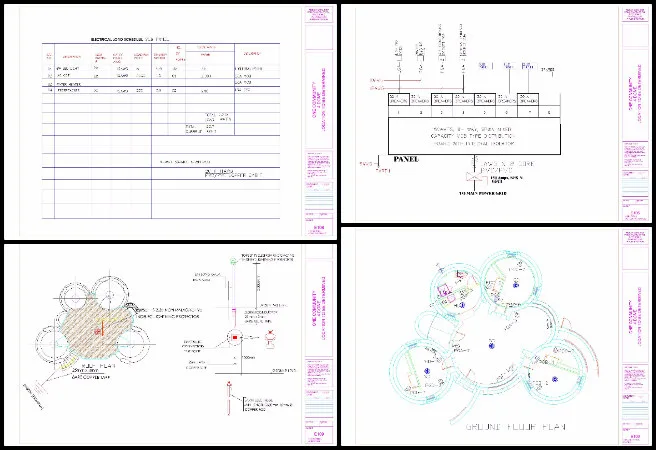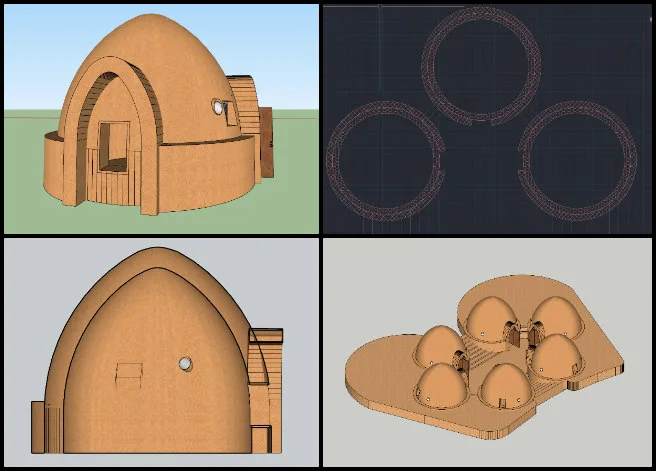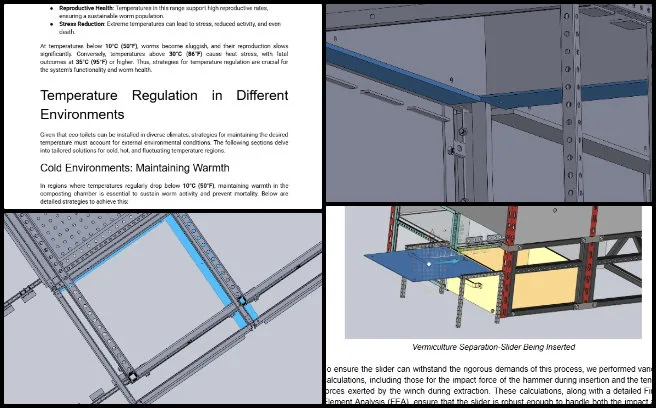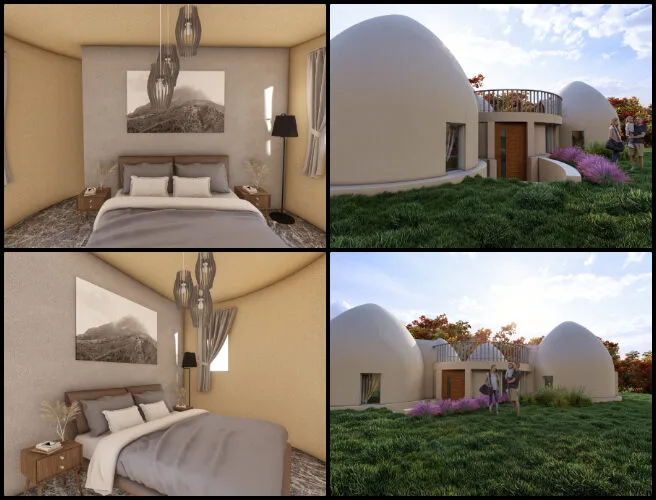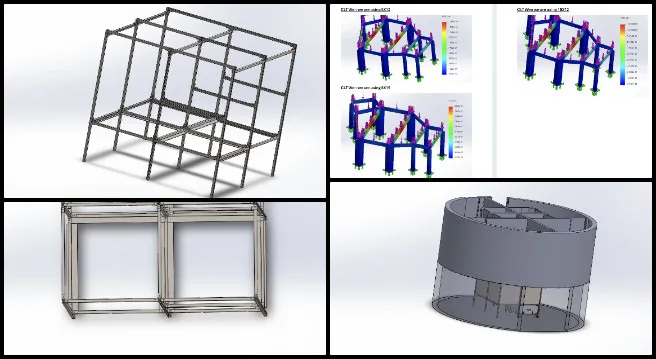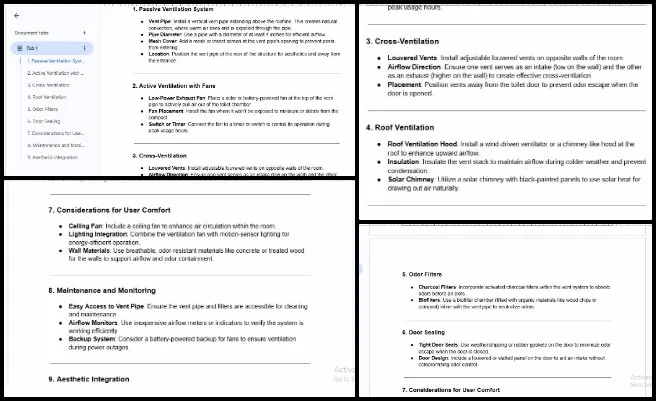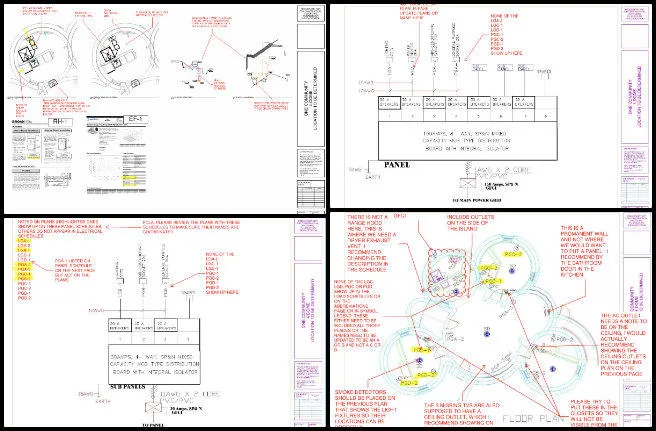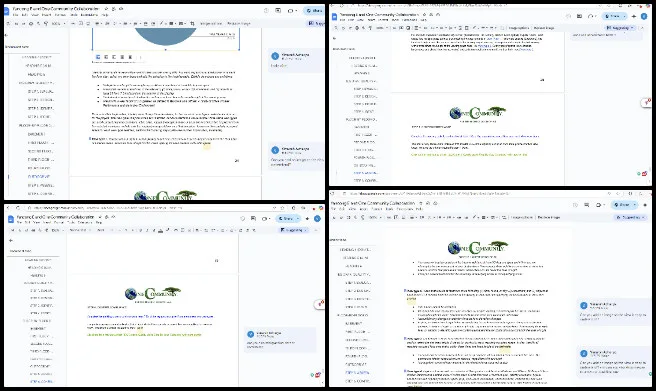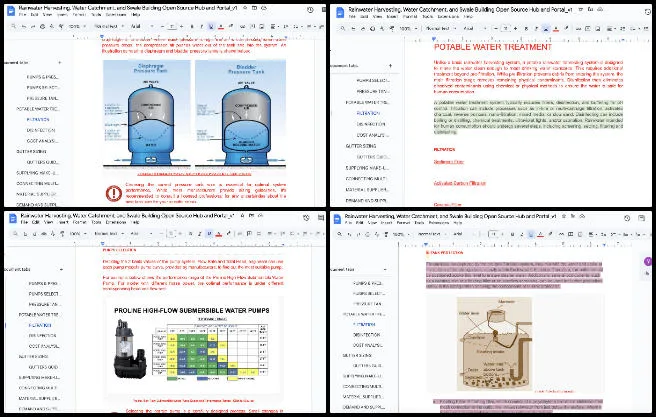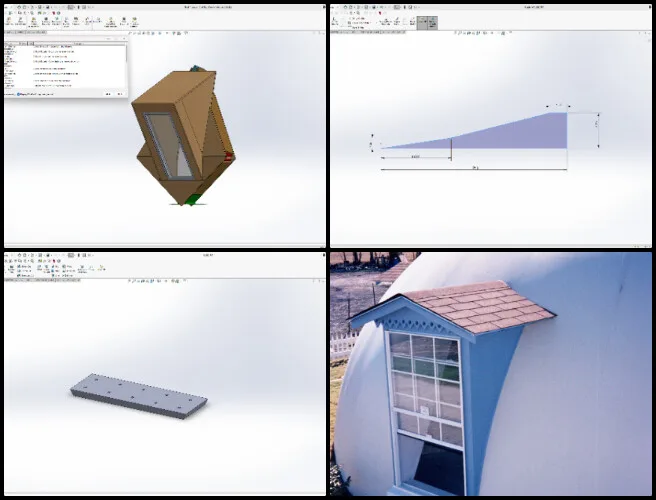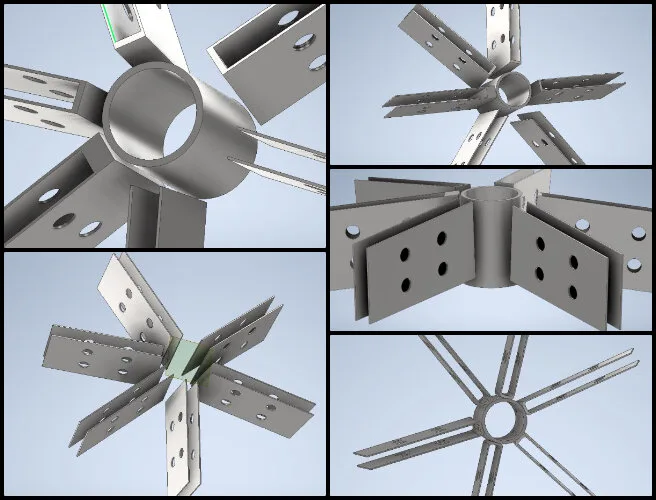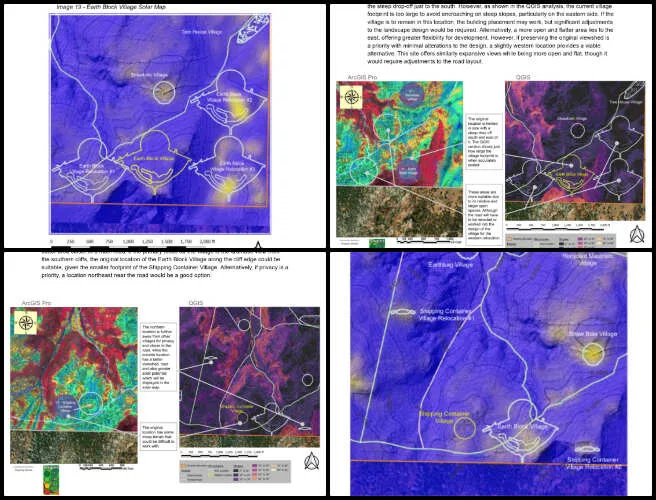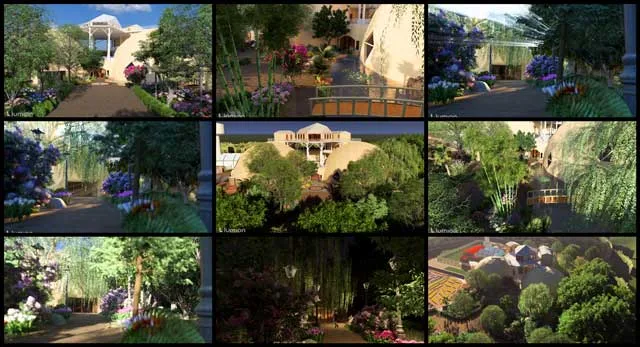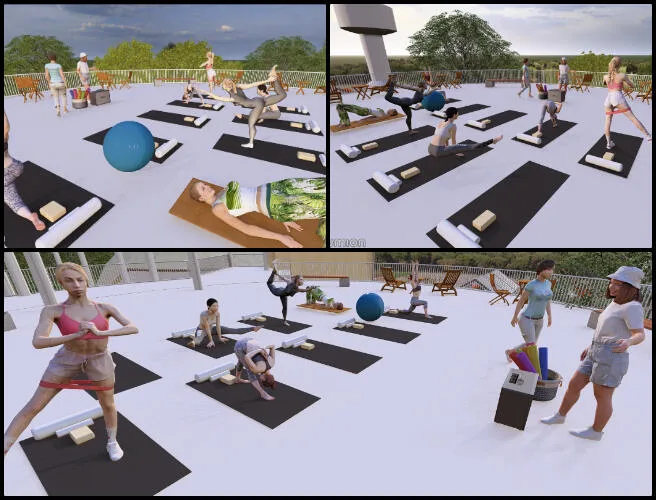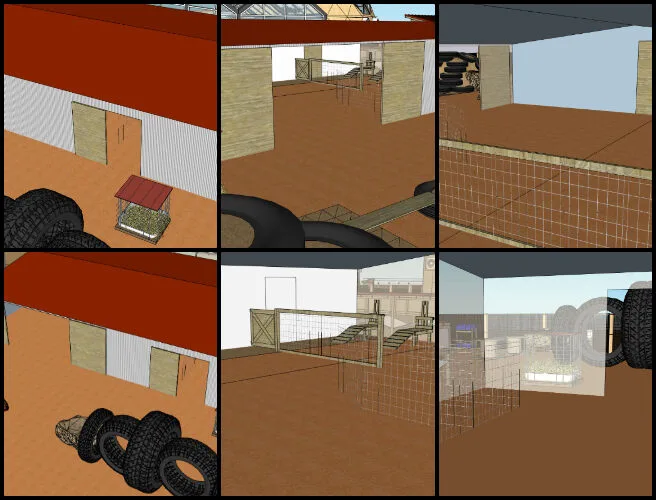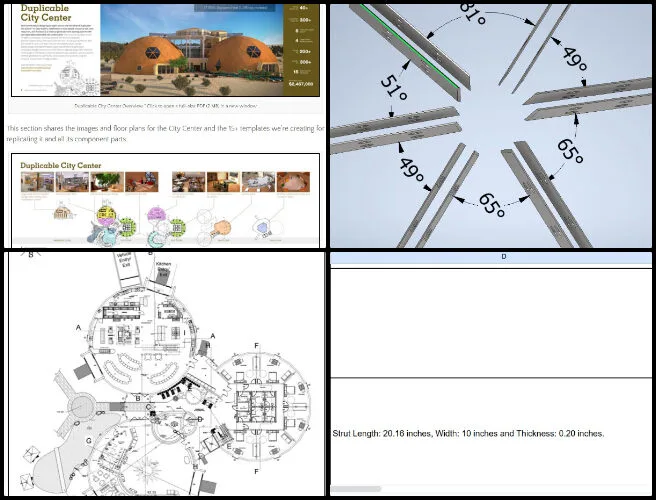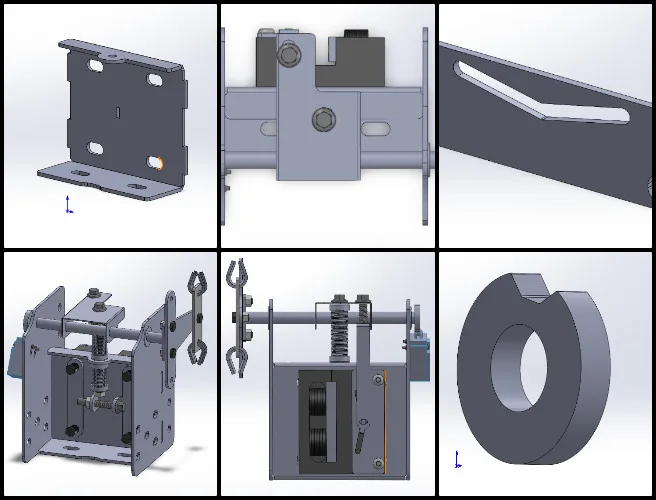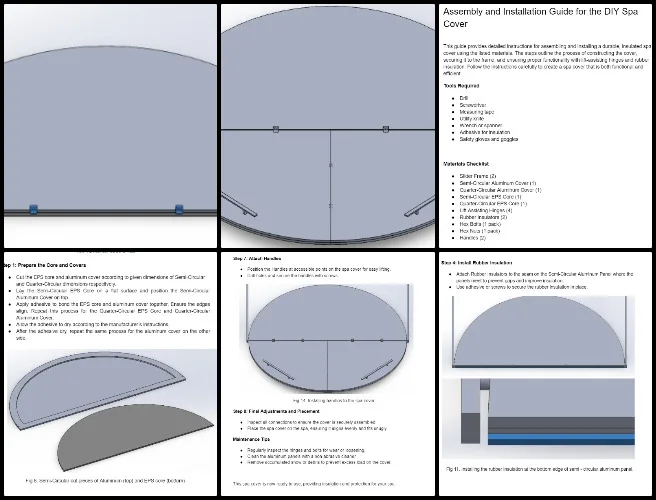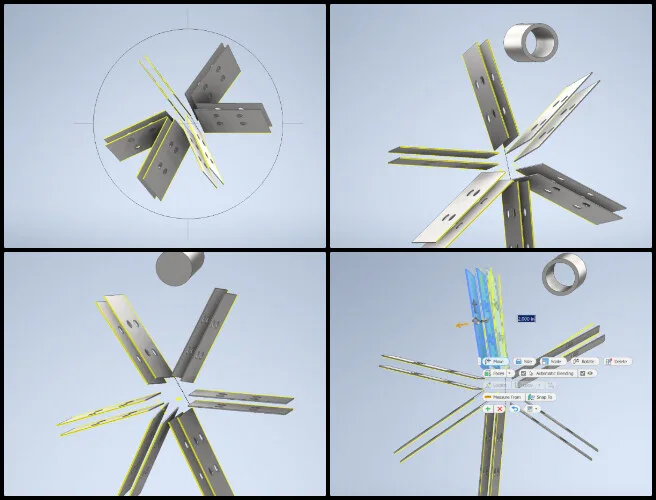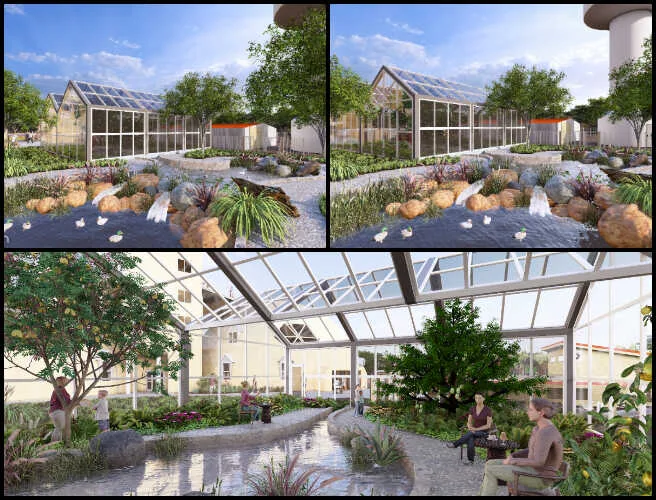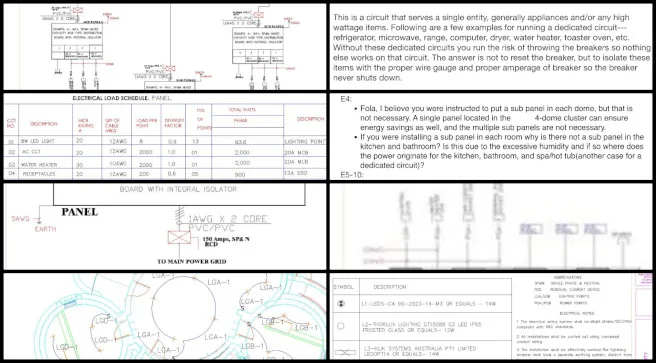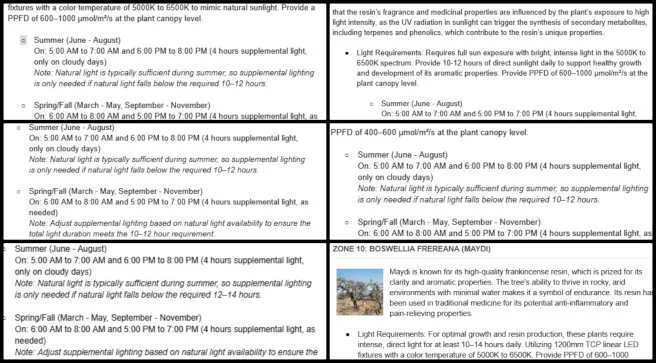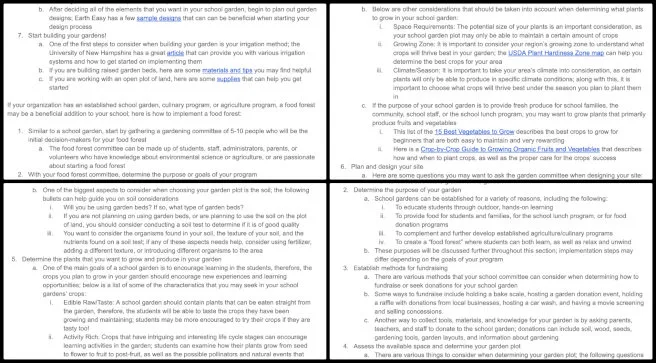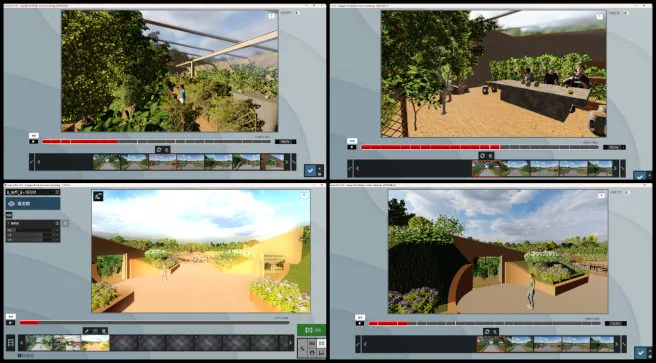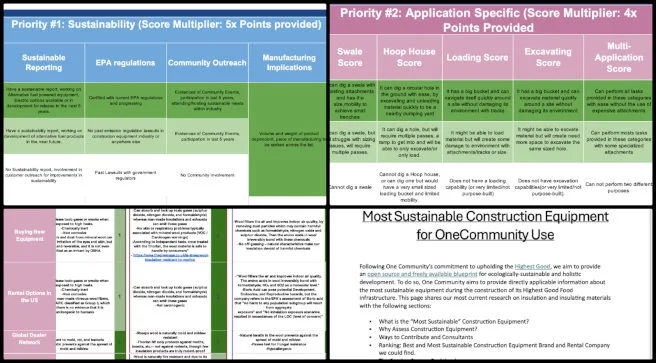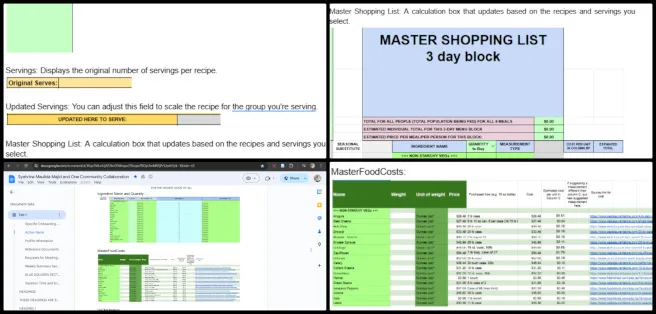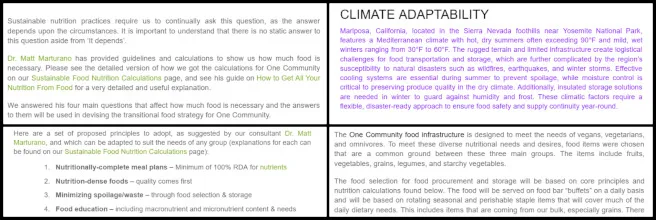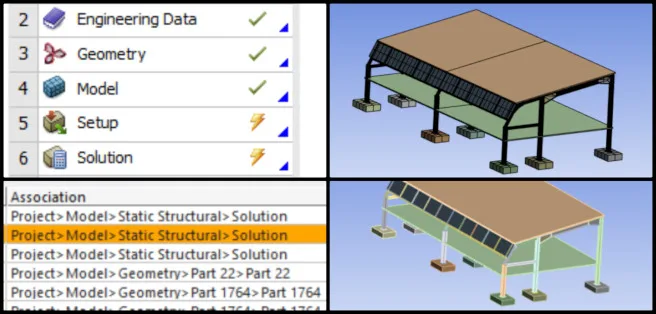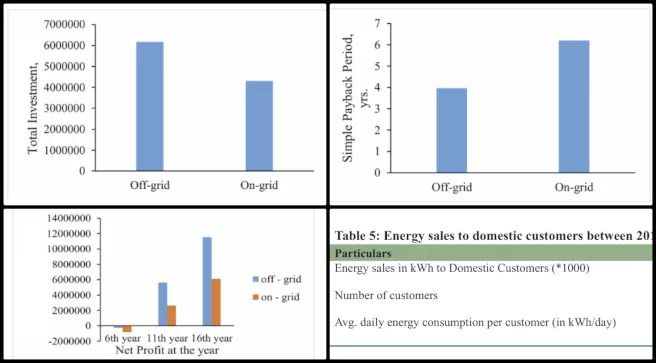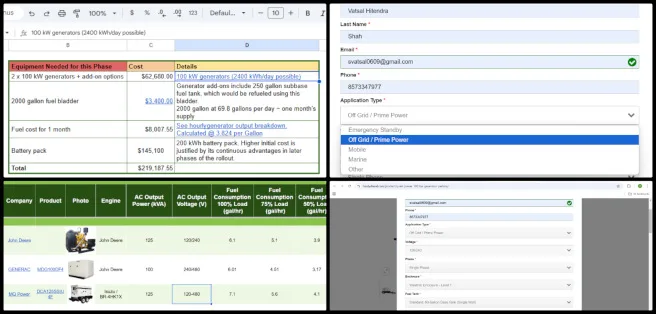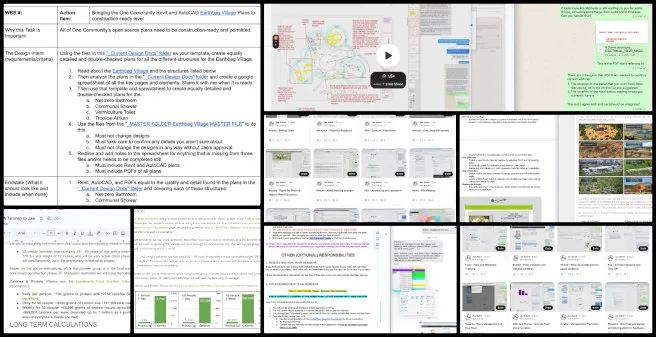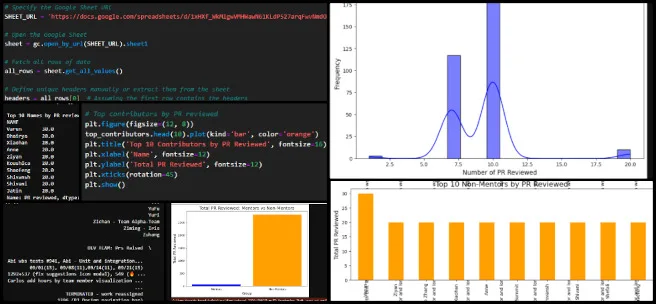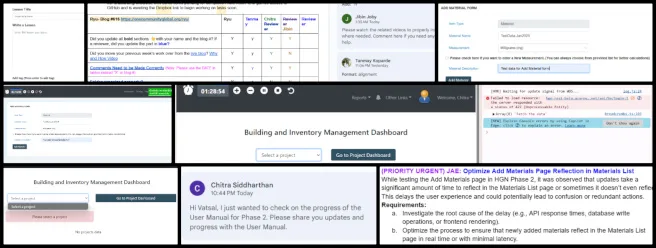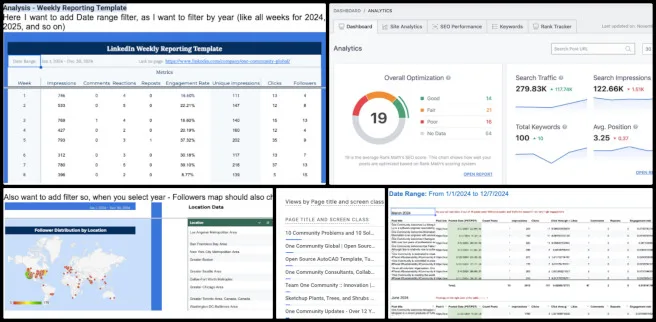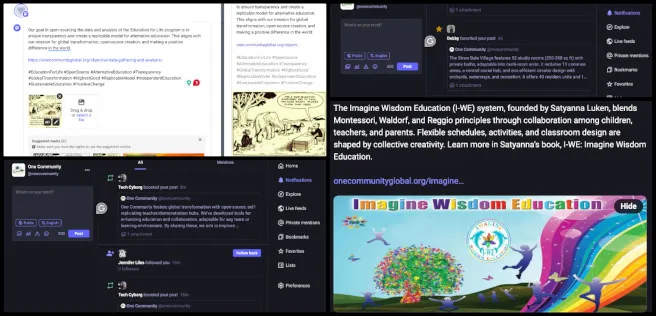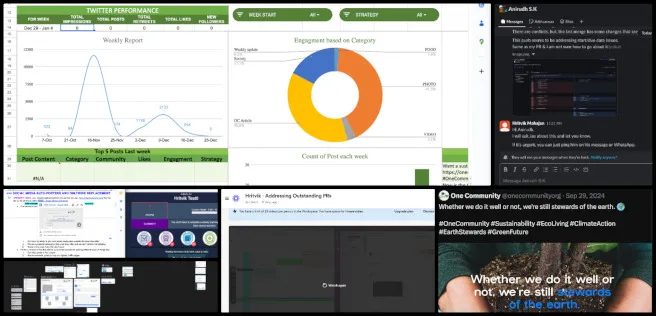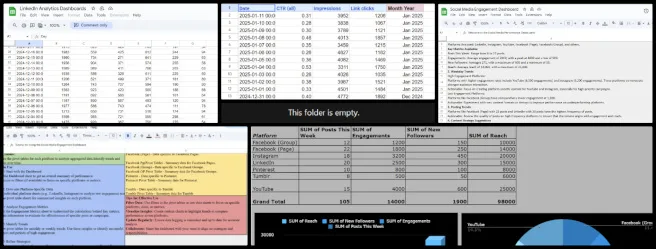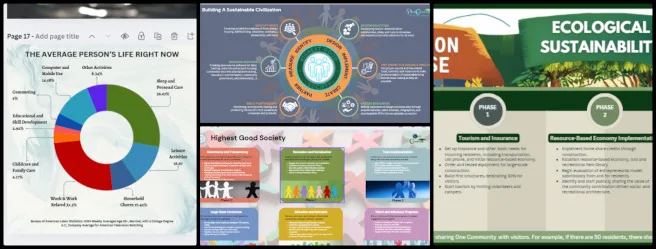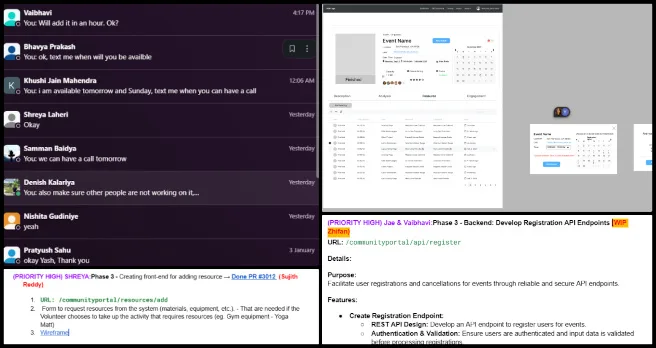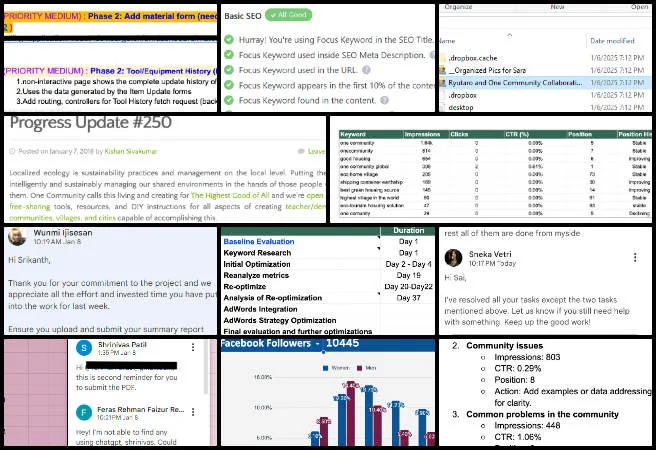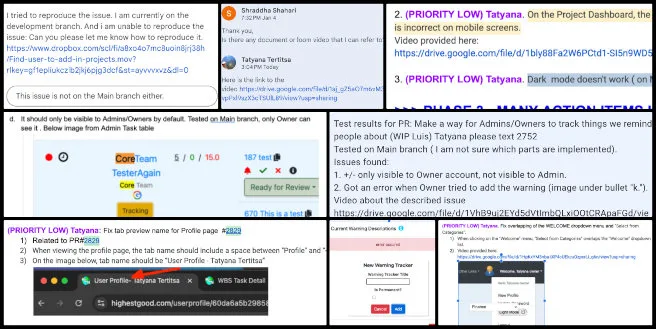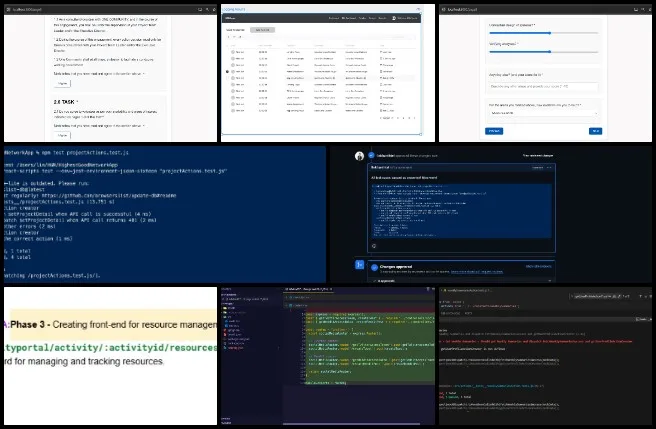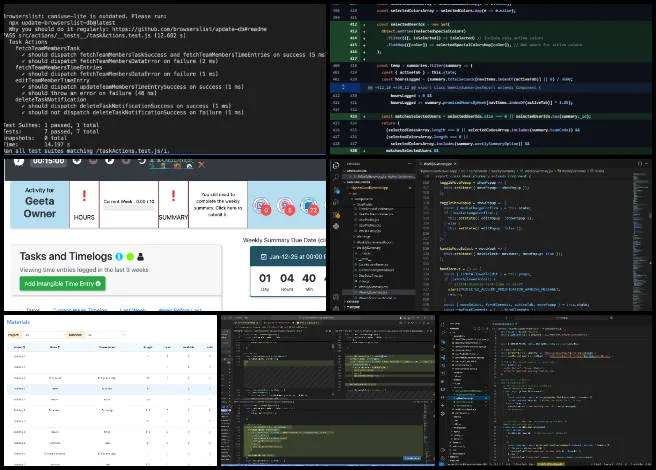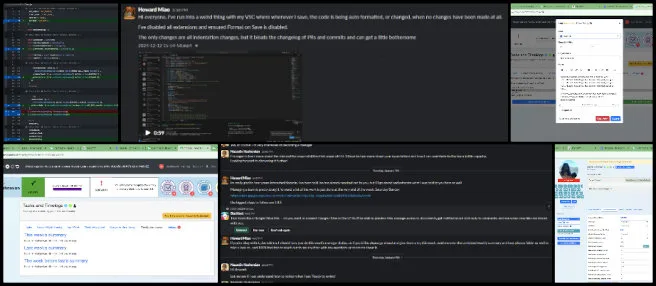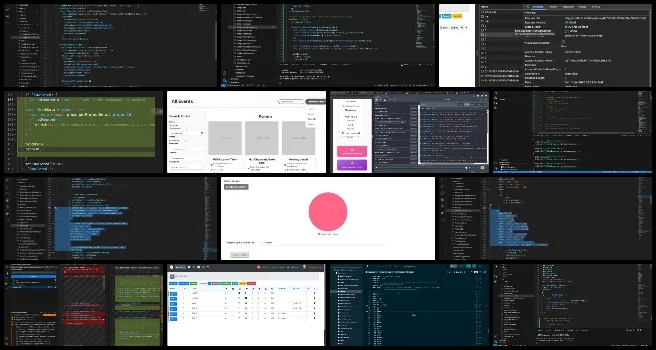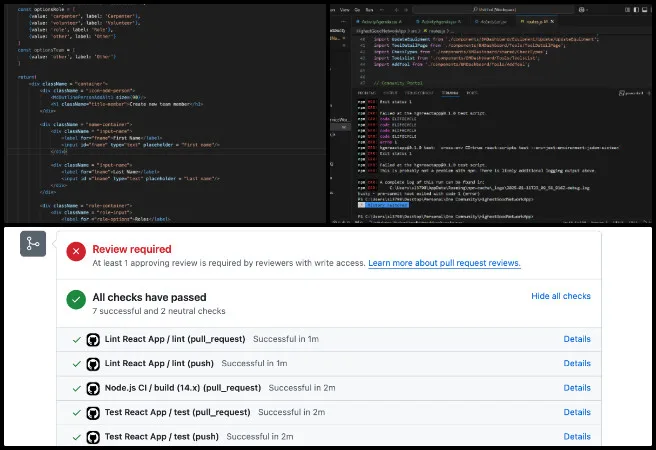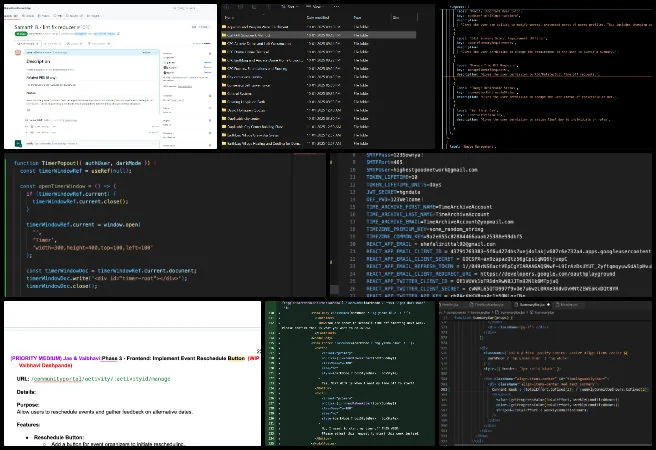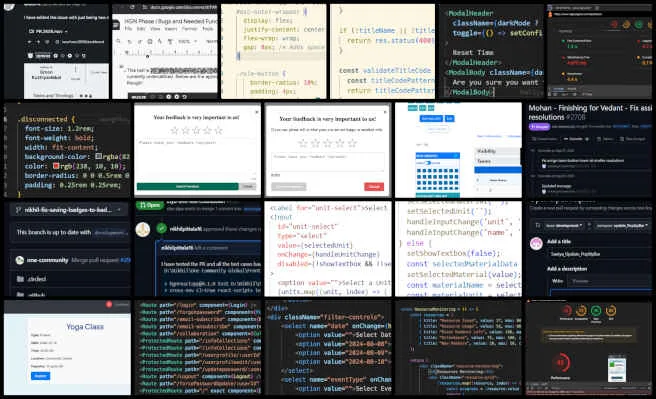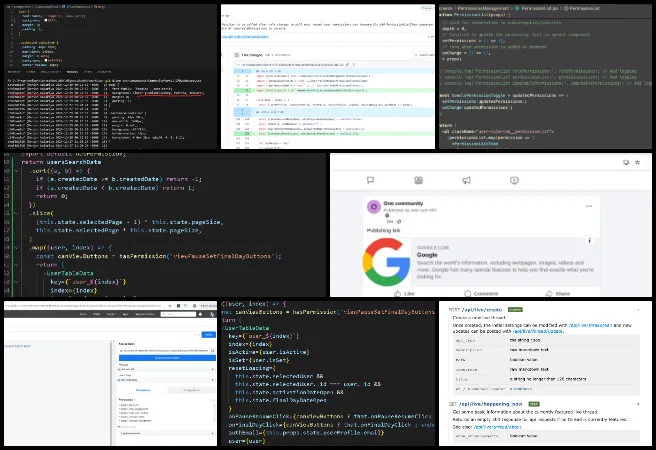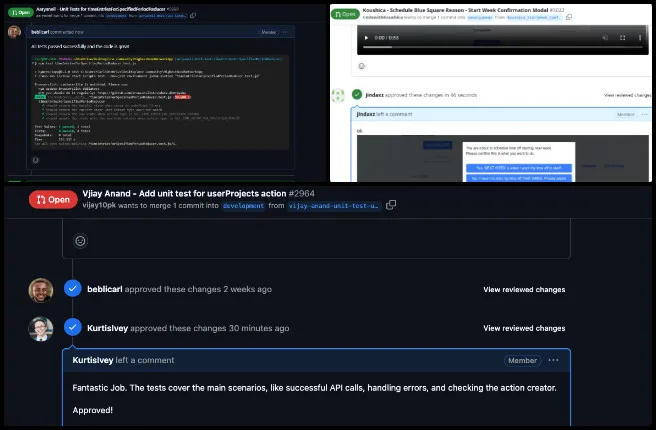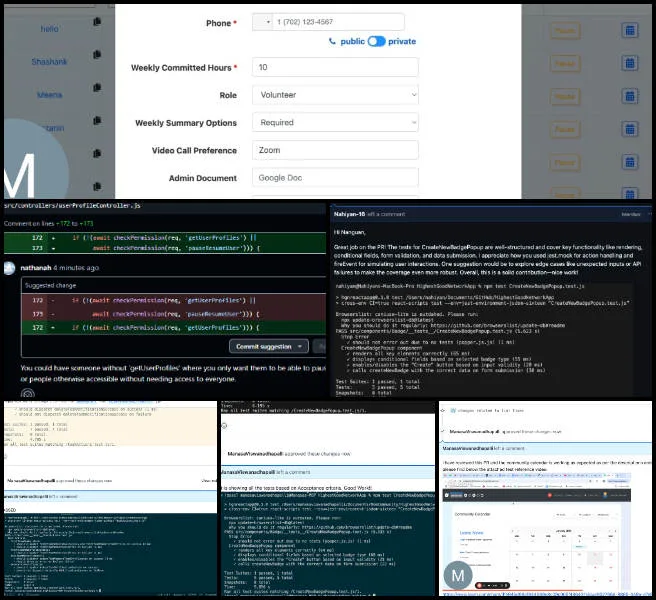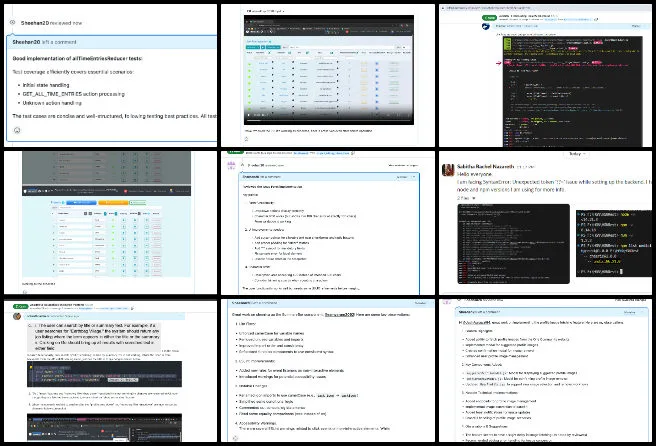Widespread and Lasting Sustainable Change – One Community Weekly Progress Update #617
At One Community, we are developing widespread and lasting sustainable change by building a self-replicating model that fosters global collaboration and sustainability. Our all-volunteer team is dedicated to creating open source and free-shared solutions in food, energy, housing, education, economics, and social architecture. By sharing this complete process, we aim to inspire teacher/demonstration hubs around the world, all for “The Highest Good of All.” Together, we are evolving sustainability to regenerate the planet and create a fulfilled way of living that benefits everyone.
- Here’s our project overview
- Here’s our world-change methodology
- Here’s how this becomes self-replicating
- Here’s how we are open source and free-sharing all the do-it-yourself designs
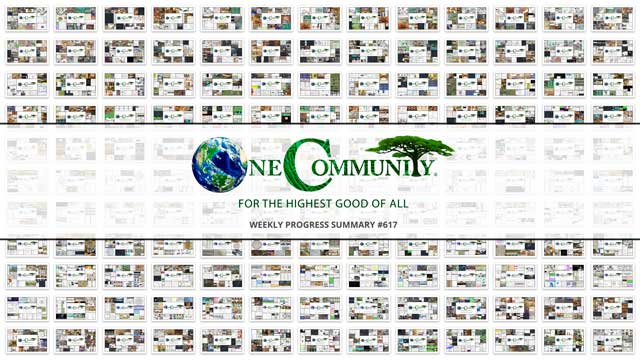
OUR MAIN OPEN SOURCE HUBS
Click on each icon to be taken to the corresponding Highest Good hub page.
One Community’s physical location will forward this movement as the first of many self-replicating teacher/demonstration communities, villages, and cities to be built around the world. This is the January 13th, 2025 edition (#617) of our weekly progress update detailing our team’s development and accomplishments:
Widespread and Lasting Sustainable Change
One Community Progress Update #617
DONATE | COLLABORATE | HELP WITH LARGE-SCALE FUNDING
CLICK HERE IF YOU’D LIKE TO RECEIVE AN EMAIL EACH WEEK WHEN WE RELEASE A NEW UPDATE
YOU CAN ALSO JOIN US THROUGH SOCIAL MEDIA
ONE COMMUNITY WEEKLY UPDATE DETAILS
HIGHEST GOOD HOUSING PROGRESS
 One Community is developing widespread and lasting sustainable change through Highest Good housing that is artistic and beautiful, more affordable, more space efficient, lasts longer, DIY buildable, and constructed with healthy and sustainable materials:
One Community is developing widespread and lasting sustainable change through Highest Good housing that is artistic and beautiful, more affordable, more space efficient, lasts longer, DIY buildable, and constructed with healthy and sustainable materials:
- Learn about: Our Upcoming Crowdfunding Campaign
- Learn about the different village models: 7 Sustainable Village Models
- Visit the open source portals for the first two: Earthbag Village OS Hub | Straw Bale Village OS Hub
This week, Adefola (Fola) Madehin (Electrical Design Specialist) continued his work with Earthbag Village electrical designs. Fola completed the socket and panel layout for the Earthbag Village project, ensuring receptacles were placed in the bedrooms and living room, with the distribution panel installed in the living room. He finalized the lighting circuit and socket ring circuit lettering and selection for the Earthbag 4 Dome Village project. He also completed the schematic diagram for the distribution panel in compliance with the National Electrical Code (NEC) and worked on the schematic diagram using the American standard for single-phase voltage. The Earthbag Village is the first of 7 to be built as the housing component of One Community’s open source model for widespread and lasting sustainable change. See some of his work in the collage below.
Akshit Sethi (Architectural Designer) continued working on updating the Earthbag Village SketchUp and AutoCAD layouts. This week, Akshit worked on the SketchUp model for the EarthBag Village project, making updates to the below-grade outer cluster domes and modifying the egress window. He also began developing the construction drawing set, ensuring it aligned with project specifications. These tasks are part of the ongoing work to advance the EarthBag Village design. The Earthbag village is the first of 7 villages to be built as part of One Community’s open source model for widespread and lasting sustainable change. See his work in the collage below.
Anil Karathra (Mechanical Engineer) continued advancing the engineering and design of the Vermiculture Toilet for the Earthbag Village project. The slider hammering tutorial documentation was finalized based on feedback, and tasks assigned to Joseph were organized and reallocated among team members. Participation in the weekly team meeting included brainstorming sessions on finalizing the slider design and operation, and collaboration with Adil to assign weekly tasks for the team. Research on temperature control strategies for composting chambers under different environmental conditions was conducted, with findings documented in the vermiculture collaboration document. A summary of the week’s activities was created, and screenshots of completed work were uploaded to Dropbox. This commitment to widespread and lasting sustainable change drives the development of innovative, eco-friendly solutions that balance environmental responsibility with high standards of functionality. See below for pictures related to this work.
Faeq Abu Alia (Architectural Engineer) continued his work on the Earthbag Village 4-dome home renders. He continued developing the 4-dome home model in SketchUp, focusing on both exterior detailing and initiating work on the interior design. The process involved refining the external features of the domes to ensure they adhered to the intended design specifications while also beginning to conceptualize and build the interior layout and features within the model. Tasks were carried out to ensure coherence between the exterior and interior elements, maintaining alignment with the overall design framework. The Earthbag Village represents a fundamental element of One Community’s open-source approach, dedicated to the mission of developing widespread and lasting sustainable change. View examples of this work in the pictures provided below.
Karthik Pillai (Mechanical Engineer) continued helping finish the Vermiculture Toilet engineering and helping with the Earthbag Village 4-dome home roof plan. This week, Karthik worked on improving the vermiculture toilet design by incorporating feedback from Jae to reinforce the frames and redesign the cover plates to align with project requirements. Concurrently, he progressed on the four-dome cluster roof project by analyzing materials recommended by Jae and using finite element analysis to evaluate their performance based on deflection levels under load. The roof design aims to maintain deflection below 0.6 inches while balancing material selection with structural stability. The Earthbag Village is the first of 7 to be built as the housing component of One Community’s open source model for widespread and lasting sustainable change. See the work in the collage below.
Manjiri Patil (Mechanical Design Engineer) continued helping to complete the Vermiculture Toilet engineering and designs. This week, Manjiri worked on developing a ventilation solution for an above-ground vermiculture toilet, focusing on odor control, airflow, and composting efficiency. The design incorporates both passive and active methods, including vent pipes, exhaust fans, and odor filters, with an emphasis on user comfort, scalability, and seamless integration to create a functional, eco-friendly, and easily maintainable system. This approach for widespread and lasting sustainable change supports the development of innovative solutions that are both environmentally friendly and effective. See below for pictures related to this work.
Michaela Silva (Architect) continued working on the interior details for the Earthbag Village 4-dome home design. This week, Michaela coordinated the mechanical, electrical, and plumbing drawings with the architectural drawings, reviewing and marking up the mechanical and plumbing documents to identify outstanding tasks. She also reviewed the electrical drawings, making updates to align them with the architectural, mechanical, and plumbing plans. Additionally, she facilitated a meeting to discuss structural beam dimensions and outlined the load requirements to be tested for compliance with building codes. The Earthbag Village is the first of 7 villages to be built as part of One Community’s open source model for widespread and lasting sustainable change. See her work in the collage below.
Vimarsh Acharya (Engineering Manager and Technical Reviewer) continued working on identifying sustainability-related arguments covering the Highest Good Lifestyle Considerations and sourcing quality research to support each one. Two tasks were assigned, both involving document reviews and detailed feedback. The first task, reviewing a quality view plan for a house, was completed, with comments provided to address the necessary aspects. Focus has now shifted to the second task, which involves reviewing the document titled “Food Procurement and Storage Overview”. The One Community model, which combines forward-thinking education with sustainably built classrooms like this, is an excellent example of widespread and lasting sustainable change. See the collage below for his work.
Yi-Ju Lien (Environmental Engineer) continued her work on the Open Source DIY Dam Design for Water Retention, Pond and Lake Creation, etc. content and Earthbag Village LEED points related to stormwater retention. Yi-Ju worked on reorganizing the Rainwater Harvesting System content, which outlines the process from pre-filtration to the selection and integration of pumps and pressure tanks. The content also includes details on potable water technology, focusing on the filtration and disinfection stages required to make rainwater safe for consumption; this relates to widespread and lasting sustainable change. See some of the work done in the collage below.
DUPLICABLE CITY CENTER PROGRESS
 One Community is developing widespread and lasting sustainable change through a Duplicable and Sustainable City Center that is LEED Platinum certified/Sustainable, can feed 200 people at a time, provide laundry for over 300 people, is beautiful, spacious, and saves resources, money, and space:
One Community is developing widespread and lasting sustainable change through a Duplicable and Sustainable City Center that is LEED Platinum certified/Sustainable, can feed 200 people at a time, provide laundry for over 300 people, is beautiful, spacious, and saves resources, money, and space:
- Learn about this building and it’s function: Duplicable City Center Open Source Hub
This week, Apoorv Pandey (Mechanical Engineer) continued working on the DIY dormer window design for the second floor of the Duplicable City Center. He analyzed previous design concepts for the second floor and reviewed the completed first-floor design to inform his approach. His research focused on industry-standard practices for dormer window design to incorporate proven principles into the project. Apoorv also began planning iterations and reworking previous dormer window designs while preparing to perform finite element analysis (FEA) on the first-floor dormer designs to identify potential improvements for the second-floor implementation. Within One Community’s open-source framework, the Duplicable City Center plays a central role in developing widespread and lasting sustainable change. The images below showcase some of this work.
Arnob Mutsuddi (Mechanical Engineer) continued working on Duplicable City Center structural engineering model and details. His work was completed on the row 8 hub connector and side strut alignment process. Efforts continued on the hub connector design for row 7-1, and progress was made on the middle ring design. A total of seven side struts were designed during the week. A team meeting was held to address feedback on the BOM project, and assistance was provided to a teammate by demonstrating the hub connector design procedure. The Duplicable City Center is a foundational part of One Community’s open-source model, which excels in the mission of developing widespread and lasting sustainable change. This approach is integral to their mission of developing widespread and lasting sustainable change through innovative and scalable solutions. See some of this work in the pictures below.
Chris Blair (GIS Technician/Horticulturist) continued working with GIS data as part of One Community’s Permaculture Design that includes the location of the Duplicable City Center. This week, Chris worked with GIS data as part of One Community’s Permaculture Design. He continued drafting a comparison of the results produced by QGIS and ArcGIS Pro, incorporating side-by-side graphics to illustrate differences and updating his Google document with additional content. He also updated the relocation map of the Shipping Container Village and adjusted the symbology for the One Community master plan map. Within One Community’s open-source framework, the Duplicable City Center plays a central role in developing widespread and lasting sustainable change. The images below showcase some of this work.
Jason Bao (Architectural Designer) continued working on producing renders for the Duplicable City Center library. He completed two final video renders of the library walkthrough following minor adjustments to the model, marking the library task as 100% complete and submitted for review. Work then shifted to producing image and video renders for the second-floor social space and exterior. The updated outdoor Lumion file received from Jae was merged with the existing file, and adjustments were made to prepare for final renders. In this process, the team maintained a keen focus on achieving a harmonious balance between aesthetic excellence and environmental considerations, ensuring that each design decision was aligned with principles that support widespread and lasting sustainable change in urban development practices. This approach is not only central to the project’s vision but also drives long-term positive impacts on the built environment.
Test render camera angles were set up, and test renders of the outdoor area were produced and uploaded to Dropbox. Additional refinements were made to the integrated file, including adjustments to camera angles and quick fixes to improve render quality. A new batch of image renders was initiated to determine optimal settings for the current model, with test results also uploaded to Dropbox for review. The Duplicable City Center is a foundational part of One Community’s open-source model, which excels in developing widespread and lasting sustainable change. This approach is integral to their mission of developing widespread and lasting sustainable change through innovative and scalable solutions. See some of this work in the pictures below.
Mohammed Maaz Siddiqui (Architect) continued working on the cupola renders for the Duplicable City Center project. He focused on updating the exterior area of the Duplicable City Center landscape, incorporating elements such as flowers and streetlights to enhance the vibrancy and liveliness of the scene. He also worked on refining the sun deck area, making adjustments to improve its realism and overall appeal. Within One Community’s open-source framework, the Duplicable City Center plays a central role in the mission of developing widespread and lasting sustainable change. The images below showcase some of this work.
Nimika Devi (Architect) continued her contributions to the landscape design and development of the Duplicable City Center‘s urban farm. The work focused on the main model of the barn area, incorporating elements from the goat barn area and making adjustments as required. Elements in the model were reoriented to align with project specifications, and the barn was edited to ensure the interior would be visible in the final render. Technical issues prevented the renders from exporting, and efforts were made to address the computer and software problems encountered. Within One Community’s open-source framework, the Duplicable City Center plays a central role in the mission of developing widespread and lasting sustainable change. The images below showcase some of this work.
Rachan Rao (Project Manager) continued working with Vatsal to assist him with the cost analysis for Off-Grid energy implementation in the HGE project. He collaborated with the DCC team to discuss their latest task updates. He also briefed them on the recent changes, and the team held a brainstorming session to explore design solutions that would meet the required specifications. Additionally, Rachan worked on the spreadsheet, making the necessary adjustments based on the new updates he received. Within One Community’s open-source framework, the Duplicable City Center plays a central role in the mission of developing widespread and lasting sustainable change. The images below showcase some of this work.
Rudrani “Sravya” Mukkamala (Mechanical Engineer) continued researching the structural components of a hydraulic elevator, focusing on the framework, guide rails, and load-bearing elements. She worked on designing the support brackets and safety brakes for the hydraulic elevator system. The support brackets were designed to ensure proper alignment and stability of the elevator components, taking into account load distribution and compatibility with the guide rails. The safety brakes were developed to meet industry safety standards, focusing on fail-safe mechanisms to prevent uncontrolled descent. Both designs were created with input from relevant technical specifications and in collaboration with the electrical engineering and architectural teams to ensure seamless integration within the overall system. Within One Community’s open-source framework, the Duplicable City Center plays a central role in the mission of developing widespread and lasting sustainable change. The images below showcase some of this work.
Sanket Basannavar (Mechanical Engineer) continued working on the Duplicable City Center spa cover as part of the City Center Natural Pool and Eco-spa Designs. The assembly and installation manual for the DIY spa cover was written, including detailed steps and accompanying pictures to improve clarity and usability. Updates were made to the calculations section of the report by revising the wording as per the suggested improvements. Additionally, rubber insulation was added between the aluminum panels in the spa cover design to enhance its thermal insulation capabilities, addressing a key aspect of the cover’s performance. Within One Community’s open-source framework, the Duplicable City Center plays a central role in developing widespread and lasting sustainable change. The images below showcase some of this work.
Tasmia Hasan (Design Engineer) continued her work on the structural engineering of the Duplicable City Center. She worked on implementing row 3 changes by separating the ring. After discussing options with the team, she shifted to an alternative method, creating multiple planes and adjusting the position of the struts along the x and y axes rather than modifying angles to achieve the required adjustments. As a foundational component of One Community’s open-source strategy, the Duplicable City Center is designed for developing widespread and lasting sustainable change. You can see examples of this work in the following images.
Yan Zu (Architectural Designer) continued her work on the greenhouse area of the Duplicable City Center. She worked on finalizing the adjustments to the greenhouse renderings, focusing on both interior and exterior areas. She also created animations for the greenhouse, emphasizing its design and functional elements. The adjustments included refining specific details in the renderings, ensuring accuracy and consistency across the visuals. For the animations, Yan showcased the greenhouse’s features, including its layout, materiality, and integration of natural elements. Both tasks aimed to provide a complete representation of the greenhouse, combining static renderings with dynamic animations to highlight its overall design and purpose. Within One Community’s open-source framework, the Duplicable City Center plays a central role in developing widespread and lasting sustainable change. The images below showcase some of this work.
HIGHEST GOOD FOOD PROGRESS
 One Community is developing widespread and lasting sustainable change through Highest Good food that is more diverse, more nutritious, locally grown and sustainable, and part of our open source botanical garden model to support and share bio-diversity:
One Community is developing widespread and lasting sustainable change through Highest Good food that is more diverse, more nutritious, locally grown and sustainable, and part of our open source botanical garden model to support and share bio-diversity:
- Learn about the structures: Hoop House Hub | Aquapini & Walipini Open Source Hub
- See what we’ll be growing: Gardens & Hoop Houses | Large-scale Structures | Food Forest | TA
This week, the core team reviewed the electrical drawings and accompanying notations for the Earthbag Village 4-Dome Cluster, providing comments, corrections, and suggestions for their integration into the overall layout. He then continued to update the Goat, Chicken, and Rabbit documentation, ensuring that all necessary tools were accurately listed and included in the Earthbag Tools, Equipment, and Material/Supplies list. The Highest Good Food initiative is a key component of One Community’s open source plans, focused on widespread and lasting sustainable change, and exemplifies the organization’s commitment through innovative design and implementation. Below are some of the images showcasing this work.
Jay Nair (BIM Designer) continued working on Aquapini and Walipini Planting and Harvesting lighting and HVAC design. He worked on revising the lighting requirements for Walipini 1, ensuring accuracy and alignment with the website format by adding detailed content for each plant entry. Additionally, Jay reviewed and refined the document to improve its clarity and examined alternative lighting solutions for potential implementation in the project. The Highest Good Food initiative is a key component of One Community’s open source plans, focused on widespread and lasting sustainable change, and exemplifies the organization’s commitment through innovative design and implementation. Below are some of the images showcasing this work.
Jessica Fairbanks (Administrative Assistant) continued advancing her work on the integration of Highest Good Food into small-scale organizations. She performed research and added to her section on starting a school garden, ensuring the content was clear and accessible. She also made progress on the next section regarding how to start a food forest. In addition, Jessica completed her weekly administrative tasks and reviewed a colleague’s work, providing detailed feedback. The Highest Good Food initiative is a central part of One Community’s open source plans, dedicated to achieving widespread and lasting sustainable change, and it showcases the organization’s commitment through creative design and execution. Her contributions are highlighted in the collage below.
Junyi Shi (Landscape Architect) continued working on developing a design for Walipini #2 as a part of Aquapini and Walipini Planting and Harvesting project. She reviewed and work began on creating video animations from the perspective of visitors. The animations aim to showcase the pathways through the Walipini 2 site, its overall exterior appearance, and internal structure. Specific perspectives highlight the garden design layout, human interactions, and other detailed aspects of the project. The Highest Good Food initiative is essential to One Community’s open source plans, focused on widespread and lasting sustainable change. Her contributions are highlighted in the collage below.
Surya Teja Anumolu (Volunteer Mechanical Engineer) continued his work on the Highest Good Food most sustainable construction and agricultural equipment. He focused on creating Excel sheets to describe different brands’ performance in sustainability metrics for construction equipment. A ranking scheme was created to make it easier for One Community across the world to buy/rent the equipment. Additionally, the ranking expanded to rental agencies to investigate project costs when compared to purchasing a new piece of equipment. The Highest Good Food initiative is a key component of One Community’s open-source plans, focused on widespread and lasting sustainable change. See his work in the collage below.
Syahrina Maulida Majid (Volunteer Nutritionist) continued working on creating menu implementation tutorials as a part of One Community’s Transition Food Self-Sufficiency Plan. She worked on drafting and refining the menu implementation tutorial for the master recipe template. She focused on improving the clarity and usability of the instructions, incorporating insights gained from earlier testing. Adjustments were made to address user needs and potential challenges, ensuring the tutorial aligned with the tool’s intended functionality. The Highest Good Food initiative plays a crucial role in One Community’s open source plans, focused on widespread and lasting sustainable change. Her work is showcased in the collage below.
Tanmay Koparde (Industrial Engineer And Team Administrator) continued working on the Menu Supply Chain and Shopping Plan, Cost Analysis, and Food Procurement and Storage Plan to streamline organizational workflows and enhance efficiency. He reviewed existing plans and added sections on waste management, water management, transportation, shipping, inventory management, and evaluation to align with project objectives, focusing on Mariposa, California. He also reviewed Ryutaro’s admin training work and suggested necessary changes to his blog. The Highest Good Food Initiative is a key component of One Community’s open source plans, focused on widespread and lasting sustainable change. See his work in the collage below.
Vatsal Tapiawala (Mechanical Engineer) continued working on integrating ideas from Paul Wheaton’s “Truly Passive Greenhouse” designs into the Aquapini/Walipinis structures. He focused on advancing the structural analysis of the earthen roof for Walipini 1. He installed ANSYS software to carry out the analysis and imported the roof geometry into the platform. Furthermore, he prepared the model by generating a detailed mesh, laying the groundwork for accurate and reliable simulation results. The Highest Good Food Initiative is a vital element of One Community’s open source plans, aimed at creating widespread and lasting sustainable change. See his work in the collage below.
Ziyi Chen (Landscape Designer) continued working on the design of the outdoor spaces for the Aquapini/Walipinis structures. She created axonometric diagrams to depict plant layering arrangements across four design areas, including the four-season area, the fruit tree area, and the trail areas. The diagrams demonstrated different configurations of the food forest, emphasizing the structural composition and spatial relationships within each zone. After finalizing the visualizations, they were incorporated into the draft web layout in the document to support the presentation of the design concepts. The Highest Good Food initiative is a key component of One Community’s open source plans, focused on widespread and lasting sustainable change. See her work in the collage below.
HIGHEST GOOD ENERGY PROGRESS
 One Community is developing widespread and lasting sustainable change through Highest Good energy that is more sustainable, resilient, supports self-sufficiency and includes solar, wind, hydro and more:
One Community is developing widespread and lasting sustainable change through Highest Good energy that is more sustainable, resilient, supports self-sufficiency and includes solar, wind, hydro and more:
- Learn about the open source sustainable-energy foundations: Solar, Hydro, and Wind
- Explore our research into the most sustainable products and companies for saving water and energy: Insulation, Eco-laundry, Lightbulbs and Light Bulb Companies, Doors and Door Companies, Windows and Window Companies, Toilets, Faucets and Faucet Accessories, Urinals, and more.
This week, Muhammad Sarmad Tariq (Electrical Engineer) continued helping finish the research and cost analysis for grid-tie vs off-grid solar microgrid design. This week he reviewed available literature on IEEE Xplore to explore methods for calculating the profit of grid-tie versus off-grid solar microgrid systems. The focus was on assessing savings for each system, energy costs for deficient units, investment costs, and battery replacement costs. This analysis is essential for determining the payback period, which indicates the time frame required for the initial investment to be recovered and the system to become profitable. The Highest Good Energy initiative is a key component of One Community’s open-source plans, focused on widespread and lasting sustainable change. See his work in the collage below.
Vatsal Hitendra Shah (Volunteer Engineering Project Manager) contacted suppliers like Generac, Perkins, and CAT to request quotes for a 100kW generator for the Highest Good Energy project and updated diesel generator prices with the latest information available online. He is awaiting responses from suppliers to finalize a selection. For assistance with unclear information required in the quote request, Vatsal reached out to Sarmad and is awaiting his response before proceeding further. The Highest Good Energy initiative is a key component of One Community’s open-source plans, focused on widespread and lasting sustainable change. See his work in the collage below.
HIGHEST GOOD EDUCATION PROGRESS
 One Community is developing widespread and lasting sustainable change through Highest Good education that is for all ages, applicable in any environment, adaptable to individual needs, far exceeds traditional education standards, and more fun for both the teachers and the students. This component of One Community is about 95% complete with only the Open Source School Licensing and Ultimate Classroom construction and assembly details remaining to be finished. We’ll report on the final two elements to be finished as we develop them. With over 8 years of work invested in the process, the sections below are all complete until we move onto the property and continue the development and open sourcing process with teachers and students – a development process that is built directly into the structure of the education program and everything else we’re creating too:
One Community is developing widespread and lasting sustainable change through Highest Good education that is for all ages, applicable in any environment, adaptable to individual needs, far exceeds traditional education standards, and more fun for both the teachers and the students. This component of One Community is about 95% complete with only the Open Source School Licensing and Ultimate Classroom construction and assembly details remaining to be finished. We’ll report on the final two elements to be finished as we develop them. With over 8 years of work invested in the process, the sections below are all complete until we move onto the property and continue the development and open sourcing process with teachers and students – a development process that is built directly into the structure of the education program and everything else we’re creating too:
- Program Overview: Education Open Source Hub
- How the components work together in designing human orchestrated eco-abundance: How to use the Education for Life Program
- Lesson Plans for Life – Lesson Plans How-to
- Foundations of Outstanding Leaders, Teachers, and Communicators
- Curriculum for Life
- Teaching Strategies for Life
- Learning Tools and Toys for Life
- Evaluation and Evolution
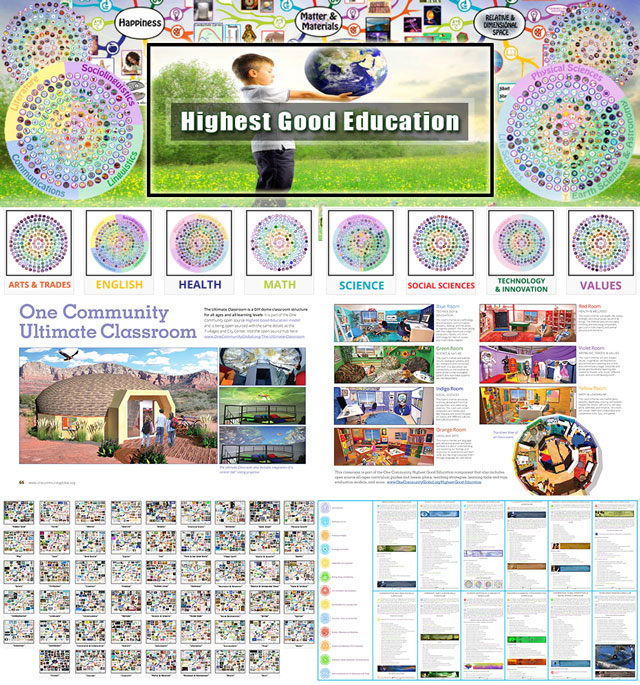
Highest Good Education: All Subjects | All Learning Levels | Any Age – Click image for the open source hub
HIGHEST GOOD SOCIETY PROGRESS
 One Community is developing widespread and lasting sustainable change through a Highest Good society approach to living that is founded on fulfilled living, the study of meeting human needs, Community, and making a difference in the world:
One Community is developing widespread and lasting sustainable change through a Highest Good society approach to living that is founded on fulfilled living, the study of meeting human needs, Community, and making a difference in the world:
- Read the Highest Good society overview: Highest Good Society
- Learn about the model for fulfilled living and sharing: A Day in the Life
- Learn about the 4 economic models: RBE | For-profit | Non-profit | Entrepreneurship
- Learn about our open source community collaboration and management software: The Highest Good Network
This week, the core team completed over 44 hours managing One Community’s volunteer-work review not included above, emails, social media accounts, web development, new bug identification and bug-fix integration for the Highest Good Network software, and interviewing and getting set up new volunteer team members. They also shot and incorporated the video above that talks about widespread and lasting sustainable change and how widespread and lasting sustainable change is a foundation of the bigger picture of everything One Community is doing. The image below shows some of this work.
Anoushka Hazari (Data Analyst) continued working on code to automate and simplify the Highest Good Network software promotion process. She focused on reviewing pull requests, updating the PR review table, and refining a blog post. A collage was designed for the blog, and a previous error in the content was corrected for accuracy. Updates were also made to the HGN spreadsheet, with specific attention given to the work listed in sheet 4. A Zoom meeting was held with Shreya to discuss the next steps for the dashboard design in Figma, where brainstorming took place, and she offered advice. Following the meeting, work began on creating the dashboard based on the discussed ideas. This involved duplicating the HGN spreadsheet and performing exploratory data analysis (EDA) in Python. Anoushka’s contributions reflect her commitment to fostering widespread and lasting sustainable change by integrating thoughtful, systematic updates that ensure the long-term functionality and impact of the project.
Additionally, progress was made in automating the creation and population of a Google Sheet using Python and the Google Sheets API. The script was designed to authenticate through a service account and populate the sheet with sample data, including Name and Review fields. Functionality was enhanced by adding charts for better data visualization, and a shareable link was generated for easier collaboration and reporting. EDA was also done on the “PR reviewed” column, with a focus on differentiating between mentors and non-mentors. This analysis aims to identify patterns in PR reviews, which will inform the design of dashboards and graphs in Figma for more effective data visualization. This work advances One Community’s mission of widespread and lasting sustainable change and strengthens our dedication to this goal. The following images show her work for the week.
Chitra Siddharthan (Data Analyst And Team Administrator) continued focusing on the existing web pages of the HGN Phase II website. She reviewed the weekly summary and Dropbox files submitted by the Code Crafters team, along with work on blog #616. She tested pull requests marked as merged and completed in the HGN Phase 2 document and provided support to Supriya through Slack by helping with task scheduling and addressing questions related to the Project Dropdown link in HGN Phase 2. Chitra also checked progress on the user manual with Vatsal and reviewed admin feedback on Ryu’s work to analyze items marked as “N” in the feedback table. Through her guidance and thoughtful coordination, she played a vital role in fostering the momentum needed for widespread and lasting sustainable change within the team’s workflow. She also reviewed the final edits of Ryu’s work during his training period as an admin. Chitra worked on resolving issues related to loading data locally during pull request testing and adding relevant images to the HGN Phase 2 document.
Chitra also retested the “Add Materials” page in HGN Phase 2, flagged its slow reflection in the materials list to Jae, and created an action item for it. Queries regarding the materials list page were discussed with Jae, including the possibility of adding a component to show who added materials and restrictions on who can add materials. Based on Jae’s input, Chitra created action items to optimize the Add Materials page reflection and add a “Created By” component to the materials list page, later adding clickstreams for these action items. She also tested PR#2982, consulted with Jae about adding a component to capture the name of the person adding materials, and reached out to Rishitha on Slack regarding this. This work helps One Community’s mission of widespread and lasting sustainable change and reinforces our commitment to widespread and lasting sustainable change. The following images show her work for the week.
Durgeshwari Naikwade (Data Analyst) continued working on projects involving Google Analytics and LinkedIn Analytics. She worked on projects involving Google Analytics and LinkedIn Analytics. For LinkedIn Analytics, Durgeshwari added a dropdown filter to the ‘Analysis – Weekday Trends (All Posts)’ and ‘Analysis – Weekday Trends (Excluding Welcome Posts)’ sheets, enabling data to be viewed by quarter to identify trends in weekday performance. By introducing such innovative enhancements, Durgeshwari has made a substantial contribution towards fostering widespread and lasting sustainable change in how data-driven insights are extracted and leveraged for more effective decision-making. This approach will not only improve operational efficiency but also set a precedent for future advancements in analytics processes.
Additionally, Durgeshwari addressed a post-date mismatch issue by creating a new column to display the exact ‘posted date’ for each post, using a function developed with the App Script extension in Google Sheets to extract this information from post links. This adjustment resolved inconsistencies between the ‘created date’ and ‘posted date,’ and she compiled data for March and June 2024 into separate sheets to analyze top posts with the highest impressions and engagement. For Google Analytics, she worked on troubleshooting data discrepancy issues. Durgeshwari also interviewed two candidates for the software development team. This contributes to One Community’s pursuit of widespread and lasting sustainable change and underscores our commitment to this vision. The following images show her work for the week.
Feras Rehman (Data Analyst) continued working on developing One Community’s Mastodon account and strategy. He scheduled six more Mastodon posts on Buffer for the following week. Targeted strategies were developed and implemented, resulting in a 5x increase in post reach through optimized hashtag usage and improved post structuring. Additionally, five more Mastodon posts were scheduled on Buffer for the upcoming week. A weekly summary review was completed, and images were added to supplement the summary. This aligns with One Community’s aim for widespread and lasting sustainable change and demonstrates our ongoing commitment to this objective. The following images show his work for the week.
Hritvik Mahajan (Data Analyst) continued focusing on multiple tasks related to marketing, promotion, software development, and administrative activities. He focused on social media management and HGN software development tasks. He updated the Google Sheet for social media tracking, experimented with formulas and charts, and reposted content across various Twitter communities. Additionally, he worked on the design of the social media scheduler in Figma and strategized for upcoming Twitter posts by analyzing engagement data and preparing hashtags and content. In the HGN software development project, he reviewed Phase 1 bugs, checked multiple front-end pull requests, identified new bugs, and coordinated with team members on Slack regarding changes and merge conflicts. Hrithik also provided feedback to the admin training team by reviewing their recent work and documenting his observations. This work helps One Community’s mission of widespread and lasting sustainable change and reinforces our commitment to widespread and lasting sustainable change. The following images show his work for the week.
Raghav Dinesh Pamuru (Product Manager) continued focusing on designing and building a Google Sheets dashboard to simplify tracking and analyzing social media engagement. His work focused on advancing the centralized Google Sheets dashboard used for tracking social media engagement across seven platforms. Enhancements were made to streamline data collection, including integrating automated formulas and conditional formatting for real-time updates and improved accuracy. Additional advanced features were added, such as pivot tables for dynamic data analysis and custom filters to refine engagement metrics by platform and period. The dashboard’s layout was reorganized for better usability, ensuring that key metrics were easily accessible to team members and stakeholders. These updates aim to optimize the efficiency and effectiveness of engagement tracking and reporting. By supporting One Community’s mission of widespread and lasting sustainable change, this work further solidifies our pledge to this vital endeavor. The following images show his work for the week.
Shireen Kayal (Humanitarian Program Developer & Data Manager) continued her work on branding graphics for all of One Community. This week she created new graphics for both the Highest Good Energy Page and the For The Highest Good of All®. Shireen focused on several key updates and tasks. She revised the infographics on Building a Sustainable Civilization, Highest Good Economics, and The Average Person’s Life Right Now. Additionally, she created a new infographic for the Duplicable City Center page. In her research on the Duplicable City Center page, Shireen summarized the findings to develop the infographic. Furthermore, she took the time to summarize Jae’s feedback and rephrased the bullet points for Highest Good Society and Economics by request. She also worked on improving the structure and bullet points for Sustainable Civilization. Shireen updated the Bureau of American Labor Statistics pie chart to conclude the week. This work advances One Community’s mission of widespread and lasting sustainable change and strengthens our dedication to this goal. The following images show her work for the week.
Yash Shah (Data Analyst and Team Administrator) continued his admin work and managed the social architecture component of the Highest Good Network software. He held a meeting with Nishita and Vaibhavi to discuss the progress of the event rescheduling feature, which has been developed with ongoing backend changes. He reviewed the feedback form task completed by Khushi and oversaw tasks for Phase 3, providing insights and assigning responsibilities. Yash also reviewed Khushi’s development work, worked on cleaning up documentation, assigned a new task to Denish, and coordinated with Bhavya regarding updates to the Figma design. Additionally, he created a blog for Dev Dynasty, organized the weekly folder, created a collage, and provided feedback on fellow volunteer’s blogs. This work helps One Community’s mission of widespread and lasting sustainable change and reinforces our commitment to widespread and lasting sustainable change. The following images show his work for the week.
ADMINISTRATION TEAM
The Administration Team’s summary, covering their work administrating and managing most of One Community’s ongoing process for developing widespread and lasting sustainable change was managed by Sneka Vetriappan (Data Analyst) and includes Jibin Joby (Data Analyst), Kishan Sivakumar (Administrative Assistant and Software Team Manager), Olawunmi “Ola” Ijisesan (Administrative and Management Support), Rachna Malav (Data Analyst), Ratna Meena Shivakumar (Data Analyst and Admin), Rishabh Rao (Administrator), Ryutaro Wongso (Economic Analyst and Team Administrator), Saumit Chinchkhandi (Administrative Assistant and Software Engineer), Shrinivas Patil (Software Engineer), Vishnu Murali (Data Analyst) and Zuqi Li (Administrative Assistant and Economic Analyst).
This week, Jibin reviewed his team’s work, created collages, updated the assigned page, worked on improving baseline metrics for the Google Analytics project, and collaborated with Vishnu to analyze and interpret visualizations in the Aircrete final documentation. Kishan focused on senior admin duties, reviewed SEO pages, addressed requests, and made final checks. The team’s collective efforts towards enhancing operational efficiency and refining key metrics are aimed at driving progress and fostering a forward-thinking approach that will instigate widespread and lasting sustainable change in the project’s overall impact. By embedding this ethos into their ongoing initiatives, they ensure that every action is aligned with long-term sustainability goals. Ola ensured managers reviewed their PR review tasks, monitored progress report updates, and assessed PR team members for promotion. Rachna, caught up on emails, continued SEO tasks, and planned to investigate causes for fluctuating scores. Ratna worked on Python scripts, created AI music, prepared summaries, and started creating Social Media dashboards. Rishabh worked on administrative tasks for team Skye, scheduled posts on social media, and prepared SEO research reports. Ryutaro completed onboarding, created collages for a blog post, and applied feedback on drafts. These collective efforts reflect a commitment to achieving widespread and lasting sustainable change.
Saumit managed the pull request workflow, updated his WordPress page, handled frontend testing, and communicated with developers. Shrinivas completed blog work for Team Moonfall and Team Reactonauts, provided feedback, and tested multiple pull requests in different views. Vishnu reviewed summaries, evaluated updates, and reported on key metrics for SEO optimization. Zuqi organized the weekly summary for the Graphic Design Team, reviewed summaries, and researched ways to improve website performance. One Community’s model for developing widespread and lasting sustainable change includes developing and maintaining a supportive administration team like this. You can see the work for the team in the image below.
GRAPHIC DESIGN TEAM
The Graphic Design Team’s summary was managed by Zuqi Li (Administrative Assistant and Economic Analyst) and included Anusha Tariq (Graphic Designer), and Junyuan Liu (Graphic Designer, UI/UX Designer), covering their work on graphic designs for a widespread and lasting sustainable change. This week, Anusha focused on developing social media content by researching and selecting relevant images, identifying specific words to feature in the designs, and creating a series of visuals using Photoshop. Each design was tailored with applied visual effects to align with chosen themes and ensure visual engagement. Her process involved sourcing and organizing materials, experimenting with design elements, and refining the final visuals to meet project goals. Junyuan also worked on creating social media content, collecting images and exploring various design options in design software. He completed three new social media images through an iterative process and began searching for images and developing ideas for the next image while brainstorming approaches for future designs. See the Highest Good Society pages for more on how this contributes to a widespread and lasting sustainable change. See the collage below to view some of their work.
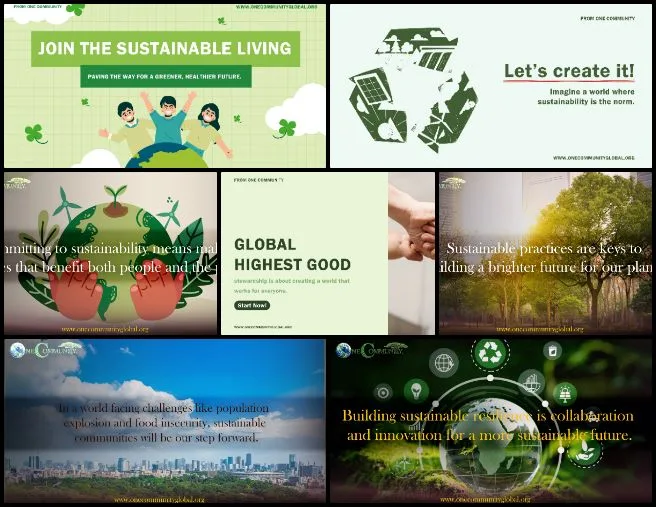
HIGHEST GOOD NETWORK PROGRESS
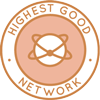 One Community is developing widespread and lasting sustainable change through open source Highest Good Network® software that is a web-based application for collaboration, time tracking, and objective data collection. The purpose of the Highest Good Network is to provide software for internal operations and external cooperation. It is being designed for global use in support of the different countries and communities replicating the One Community sustainable village models and related components.
One Community is developing widespread and lasting sustainable change through open source Highest Good Network® software that is a web-based application for collaboration, time tracking, and objective data collection. The purpose of the Highest Good Network is to provide software for internal operations and external cooperation. It is being designed for global use in support of the different countries and communities replicating the One Community sustainable village models and related components.
- Learn about our open source community collaboration and management software: The Highest Good Network
This week, the core team continued their work on the Highest Good Network PRs testing, confirming the fixed PRs and resolving several issues, confirming fixes for the Projects find user function, and identifying unresolved issues with tracking reminders for Admins and Owners (#2752). They assigned several tasks to volunteers, including creating an auto-poster for Reddit, fixing permissions for interacting with the “Ready for Review” task, and improving the responsiveness of the “Save Changes” button. Additionally, they recorded a video providing details for a new task, reported two new bugs in the PHASE 2 section, and documented two additional bugs in the MISCELLANEOUS section. See the Highest Good Society and Highest Good Network pages for more on how this relates to widespread and lasting sustainable change. The collage below shows some of their work.
ALPHA SOFTWARE DEVELOPMENT TEAM
The Alpha Team’s summary, covering their work on the Highest Good Network software, was managed by Lin Khant Htel (Frontend Software Developer) and includes Nanguan Lin (Software Developer), Rupa Rajesh Bhatia (Software Engineer), Sheetal Mangate (Software Engineer), and Sujith Reddy Sudini (Full-Stack Software Developer), covering their work on graphic designs for a widespread and lasting sustainable change. This week, Lin reviewed and approved PR #3014, tested the codebase locally with all test cases passing, and gained further familiarity with the project. Lin also reviewed the weekly summaries, photos, and videos submitted by Alpha team members and managed Alpha Team’s responsibilities by assigning tasks and updating task hours as needed.
Sheetal focused on exploring the functionality of theweeklySummariesaction. She worked on covering test scenarios for thegetWeeklySummariesandupdateWeeklySummariesfunctions. Specifically, she validated scenarios to ensure the correct actions were triggered and the user profile was loaded forgetWeeklySummaries. In doing so, her contributions aimed at implementing a solution that could drive widespread and lasting sustainable change, ensuring the system is both reliable and adaptable to future needs. Additionally, Sheetal ensured that all code functions as expected. Sujith began working on Phase 3 of the project, which involves creating the front-end for the Resource Management Dashboard. The dashboard will be accessible at/communityportal/activity/:activityid/resources and aims to provide a streamlined interface for managing and tracking resources. Sujith has started exploring the wireframe to understand the design and functionality requirements, setting the groundwork for the development phase. This thoughtful approach not only ensures the technical efficiency of the dashboard but also contributes to widespread and lasting sustainable change in how resources are managed across the system. By prioritizing user-centric design and scalable solutions, Sujith’s work is expected to create long-term positive impact on the project’s resource management strategies.
Nanguan worked on creating an appropriate auto-poster for Reddit, reading relevant backend code, and attempting to integrate the current draft solution into the existing backend code. Additionally, he resolved a bug in CreateNewBadgePopup.jsx and submitted the correct test cases as Kurtis Ivey required. The old pull request was replaced, and a new one was submitted. His approach not only addressed immediate issues but also fostered a development process that encourages widespread and lasting sustainable change by focusing on the long-term integrity and scalability of the backend system. This ongoing improvement contributes to creating a more resilient and adaptable infrastructure for future development initiatives.
Rupa concentrated on improving the multi-step form project by restructuring the user interface to align with modern design standards, ensuring device adaptability. The visual elements were customized using component-based design principles, with specific attention to creating a cohesive look and feel. The form’s interactivity was enhanced by introducing dynamic controls, such as adjustable sliders, custom input fields, and toggle switches, with functionality coordinated through modular state handlers. These efforts were planned to foster widespread and lasting sustainable change. Transitions between form steps were streamlined using asynchronous routing strategies, enabling smooth navigation and preserving user inputs.
Logic was added for adaptive form responses based on user actions to improve functionality, alongside features like instant data verification. Custom modules for capturing digital signatures and configuring preferences were also implemented, expanding the form’s capabilities. On the collaborative side, Rupa analyzed workflows with Sujith, Sheetal, and Nanguan, identifying key areas for process optimization and offering actionable recommendations. Additionally, Rupa assessed Lin Khant Htel’s project, examining work patterns and suggesting technical and operational improvements for better development outcomes. Learn more about how the Highest Good Network will measure and assist in widespread and lasting sustainable change in the Highest Good Network open-source hub. The collage below shows a compilation of the work from this team.
The Binary Brigade Team’s summary overseeing advancements in the Highest Good Network software was managed by Vijay Anand Pandian (Full Stack Software Engineer) and includes Aaryaneil Nimbalkar (Software Developer), Anirudh Sampath Kumar (Software Developer), Ashish Nagaraju (Software Engineer), Deepthi Kannan (Software Engineer), Geeta Matkar (Software Engineer) and Sriram Seelamneni (Software Engineer). The Highest Good Network software is how we’ll be managing and objectively measuring our process for widespread and lasting sustainable change through our social architecture, construction, production, and maintenance processes.
This week, Aaryaneil worked on testing the Dropbox API for the repository and configuring permissions to limit automation usage to owner users. He created routes for Dropbox and began integrating Sentry APIs to handle user addition and removal. Additionally, he focused on integrating the Sentry API into the application by creating the necessary routes for its endpoints. Anirudh worked on resolving a bug in the user management page where deleting a user after applying a search filter did not reflect changes without refreshing the page. By ensuring the efficient integration of APIs and resolving critical bugs, their efforts contribute to widespread and lasting sustainable change in the application’s long-term functionality and user experience. He implemented a fix to allow the page to update dynamically upon deletion, regardless of whether a search filter was applied.
Additionally, Anirudh resolved merge conflicts in one of his previous pull requests by updating the branch, performing necessary testing, and checking in the code. He also started investigating merge conflicts in PR 2915, though the resolution remains incomplete and is currently on hold. His dedication to the task reflects a strong commitment to widespread and lasting sustainable change, ensuring that each resolution fosters both immediate functionality and long-term project stability. Ashish concentrated on the material list webpage within the building management dashboard, making modifications and adding features based on the provided design. He added a “Hold” column to the table but noted that the functionality for updating records remains pending. He is now focused on adding a “Usage” column, which involves understanding its implementation in the backend due to similarities with the update functionality. Deepthi worked on improving the weekly summaries page, addressing alignment issues and integrating feedback from team members. She resolved merge conflicts in existing pull requests and created a new pull request (#3108), preparing it for review. Through her efforts, she has contributed to the enhancement of the project’s functionality, ensuring that each improvement is built to facilitate widespread and lasting sustainable change in the overall system architecture.
Geeta tested the header scaling functionality for images, confirming it is working as expected after previously being verified only for text. She also worked on resolving a merge conflict to enable a pull request to be merged and addressed a category bug in the projects feature by downloading the code from the repository and running it locally. Geeta’s efforts underscore her commitment to ensuring widespread and lasting sustainable change by improving software functionality and resolving critical issues. Sriram focused on resolving issues with filter results on the Reports page, addressing problems where emails and summaries were not displayed correctly. He pushed updates and created a pull request for the task, and after finalizing the functionality, the filtering system now works as intended. Sriram has since started a new task to add a 10+ hours filter, a “Clear All” button, and improved formatting to the Reports page. Vijay worked on improving test coverage for action creators in the HGN software project. He completed unit test implementation for the taskActionCreator file (PR #3026) and continued developing tests for the userProjectsActionCreator and taskActionCreator files. Additionally, he reviewed weekly summaries from the Binary Brigade team, compiled the team’s weekly summary report, and uploaded supporting documentation and screenshots to the designated Dropbox folder. See the Highest Good Society and Highest Good Network pages for more on how this relates to widespread and lasting sustainable change. View some of the team’s work in the collage below.
BLUE STEEL SOFTWARE DEVELOPMENT TEAM
The Blue Steel Team’s summary, presenting their work on the Highest Good Network software was managed by Howie Miao (Software Engineer, Team Manager) and includes Nazanin Hashemian (Software Developer) and Ramakrishna Aruva (Software Engineer). The Highest Good Network software is how we’ll be managing and objectively measuring our process for developing widespread and lasting sustainable change through our social architecture, construction, production, and maintenance processes. This week, Ramakrishna added an “R” icon to the taskbar to enable navigation to the reports page for each user. He started calculating the number of tasks completed by users and explored displaying this information next to the icon in the taskbar.
Howie focused on managerial tasks, reaching out to team members who appeared behind on their work. He introduced Nazanin to the responsibilities and expectations of a managerial role to help her transition into this position. Additionally, Howie worked on resolving a bug that prevented typing in the email section of the announcements page, submitting a pull request for the fix. His efforts aimed to foster widespread and lasting sustainable change by ensuring team alignment and operational efficiency. Nazanin transitioned from a Windows environment to a new Mac system, cloning both the front-end and back-end components. She encountered an authentication issue with the back end on the new system and worked with Jae to resolve it. She continued investigating a bug, determined it was not a bug after further testing, and completed additional checks for confirmation. Nazanin also began reading the HGN Software Team Management document to prepare for a future managerial role. See the Highest Good Society and the Highest Good Network pages to learn more on how their work contributes to developing widespread and lasting sustainable change. See below to view images of their work.
CODE CRAFTERS SOFTWARE DEVELOPMENT TEAM
The Code Crafters Team, covering their work on the Highest Good Network software, was managed by Swaroop Udgaonkar (Software Engineer) and includes Ashrita Cherlapally (Software Engineer), Denish Kalariya (Software Engineer), Dhrumil Dhimantkumar Shah (Software Engineer), Humera Naaz (MERN developer), Muhideen Mustapha (Software Engineer) and Pavan Swaroop Lebakula (Software Engineer). The Highest Good Network software is how we’ll manage and objectively measure our process for widespread and lasting sustainable change through our social architecture, construction, production, and maintenance processes.
This week, Ashrita successfully debugged the system, ensuring that data is correctly transferred from the backend to the frontend. The updated badge schema now properly sends the list of users to the frontend, marking the task as 50% complete. Several approaches were implemented to refresh and repopulate the new user list in the backend, with all methods tested and validated using Postman. These efforts are expected to drive widespread and lasting sustainable change, establishing a robust foundation for future enhancements. Denish worked on enhancing the dashboard and contributed to the development of backend and database components for Phase 3. A significant task involved addressing a limitation in the userProfiles collection, where the weeklySummaries array only retained the last three summaries, preventing the ability to track total submissions over time. To resolve this, he updated the database schema by introducing a new field to store the dates of summary submissions while ensuring that the summary content itself is not stored, in line with project requirements and privacy considerations. Denish’s efforts are directed towards implementing solutions that promote widespread and lasting sustainable change in the project’s data management practices. These efforts exemplify a commitment to creating more scalable and responsible systems that foster long-term impact.
Dhrumil continued working on resolving bug #199, which involves correcting inaccuracies in the “Projects With Completed Hours” section of the People Report. The issue has proven to be particularly challenging, requiring significant effort to identify the root cause and implement a solution. Despite focused attention, the problem remains unresolved, and work on the fix is ongoing. These advancements are poised to drive widespread and lasting sustainable change in the efficiency of backend-to-frontend data transfer processes. Muhideen debugged and data was passed from the backend to the frontend, and the modified badge schema now transfers the list of users correctly to the frontend, marking the task as halfway complete. Multiple methods were implemented to repopulate the new list of users in the backend, and these methods were tested using Postman. In addition, his approach to solving the issue ensures widespread and lasting sustainable change, fostering more robust and scalable solutions for future challenges.
Humera worked on the “X Hours for X Week Streak” feature, which tracks hours worked over consecutive weeks and awards a badge when the required threshold is met. The task involved creating logic to verify if a user had met the required weekly hours in the streak. The feature worked as expected in the local development environment, but an issue arose with updating the database to reflect the awarded badges. The problem was related to how badges and badge counts were being saved, and efforts were made to fix the database update process to ensure the badges were properly recorded. This initiative is emblematic of the commitment to fostering widespread and lasting sustainable change.
Pavan addressed an issue where deleting a subtask or task from the WBS page caused the screen to turn white, necessitating a page reload. Initial changes were made, and while they appear to resolve the issue, further verification is required to determine whether the solution is a proper fix or a temporary workaround. Relevant images were attached to document the current status, and additional work will be undertaken to implement a more robust fix. These efforts aim to establish widespread and lasting sustainable change in the functionality of the system. Swaroop worked on two ongoing tasks, starting with implementing changes in backend files based on Diya’s merged pull request in the codebase. He tested APIs using Postman to identify the root cause of reported bugs. For the other task, he focused on refining layouts for team placement on small screens, particularly for mobile views. In his role as a manager-in-training, he reviewed his team’s summaries, photos, and videos and created a team folder containing two photos of each team member’s work. See the Highest Good Society and Highest Good Network pages for more on how this relates to widespread and lasting sustainable change. View some of the team’s work in the collage below.
DEV DYNASTY SOFTWARE DEVELOPMENT TEAM
The Dev Dynasty Team’s summary, covering their work on the Highest Good Network software, was managed by Jatin Agrawal (Software Engineer) and includes Nishita Gudiniye (Software Engineer), Shreya Vithala (Software Engineer), Shraddha Shahari (Software Engineer) and Zhifan Jia (Software Engineer). The Highest Good Network software is how we’ll manage and objectively measure our process for widespread and lasting sustainable change through our social architecture, construction, production, and maintenance processes.
This week, Jatin worked on the bug to integrate the HGN form with the main application. He fixed several UI issues, including replacing the test navbar with the actual navbar, improving the speed of data flow, and ensuring the flow was uninterrupted by the application’s operation. Nishita worked on developing the frontend interface for the events calendar, ensuring alignment with the Figma mockup, and submitted a pull request for review. She also began work on the Landing Page for Event Popularity Analytics by adding the user interface for event cards and incorporating functionality to track drop-off rates and no-show metrics. By focusing on intuitive designs and impactful functionality, her contributions are poised to drive widespread and lasting sustainable change.
Shraddha focused on analyzing and addressing a reported bug by reproducing the issue and investigating its root cause. It was observed that the same delete warning message appeared for different user roles, including owner and admin. A screen recording was created to provide clarification and validate these observations. During this analysis, another related issue was identified where, after deleting a particular task, the page became blank, requiring a refresh to return to the task list page. Work is ongoing to address these issues and identify their underlying causes. Through diligent investigation and problem-solving, Shraddha aims to implement widespread and lasting sustainable change, ensuring the robustness and consistency of the system moving forward. Shreya worked on the PermissionsManagement.jsx file, writing sample test cases to bolster software security and reliability. She also met with Shreya Laheri to discuss Jae’s feedback on the HGN Survey Dashboard, ensuring that all insights were addressed to enhance the dashboard’s functionality and user experience. Their combined efforts aim to create widespread and lasting sustainable change, as they strive to refine the system for improved efficiency and impact.
Zhifan completed the development of the pause user permission feature, which was mostly finalized the previous week, and spent a significant portion of time debugging a 403 Forbidden issue. The new permission was added to a protected route, enabling users with the appropriate permissions to fetch all users on the user management page. The remaining time was used to review and analyze a new task, culminating in the creation of a schema and controller for it. See the Highest Good Society and Highest Good Network pages for more on how this relates to widespread and lasting sustainable change. View some of the team’s work in the collage below.
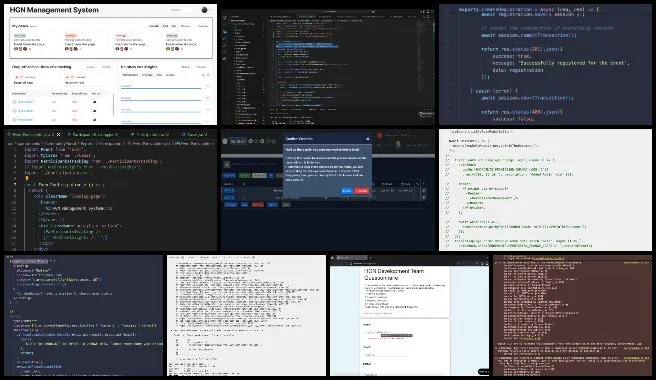
EXPRESSERS SOFTWARE DEVELOPMENT TEAM
The Expressers Team’s summary, covering their work on the Highest Good Network software, was managed by Strallia Chao (Software Engineer) includes Reina Takahara (Software Developer) and Shreya Laheri (Software Developer). This week, Reina resolved merge conflicts in several pull requests that were merged, including PR #2916 for deleting tags from the lesson list, PR #2671 for enabling badge filtering on the badge management page, and PR #2566 for allowing users to delete their own time. She also worked on frontend components for implementing functionality to create a new team member as part of the Phase 2 implementation. Such efforts are fundamental to fostering widespread and lasting sustainable change, ensuring that progress is both meaningful and enduring. Shreya collaborated with Shreya V to review feedback from Jae on the HGN Questionnaire Dashboard, documented required changes, and updated the design to reflect the adjustments. She created a video to explain the updates and gather further feedback, developed one page for her Phase 3 task, and addressed challenges with committing these changes to her GitHub repository. Through these concerted efforts, Shreya is contributing towards widespread and lasting sustainable change in the project, ensuring its resilience and adaptability over time.
Strallia resolved merge conflicts in PR #3007 for four frontend components on the Total Org Summary page, prepared related backend code for merging, and transitioned into a managerial role by reading documentation, checking in with team members, and setting up weekly meetings. She identified a bug with permissions for the “ready to review” component, created a ticket for it, and updated the backend for the Volunteer Trends chart on the Total Org Summary page to calculate total volunteer hours by week and month. See the Highest Good Society and Highest Good Network pages for more on how this relates to widespread and lasting sustainable change. See the collage below to view the team’s work.
LUCKY STAR SOFTWARE DEVELOPMENT TEAM
The Lucky Star Team’s summary of the Highest Good Network software, was managed by Anne Zhang (Software Engineer) and includes contributions from Chetan Sunku (Software Engineer), Koushica Bosadi Ulaganathan (Software Engineer), Nikhitha Kalinga (Software Engineer), Neha Bogireddy (Software Engineer), Samarth Bhadane (Software Engineer), T R Samarth Urs (Data Analyst), Shefali Mittal (Volunteer Software Engineer) and Vaibhavi Madhav Deshpande (Software Engineer). This week, Chetan resolved all merge conflicts for a recently completed hotfix (3017) and began investigating an issue with the “Interact with Task ‘Ready for Review’” permission not functioning correctly. Despite enabling the permission, the button remains disabled for users with appropriate access, and Chetan is working on identifying the root cause. His ability to analyze complex systems, reflects an unwavering commitment to producing not just temporary fixes but widespread and lasting sustainable change that will endure across iterations and future updates.
Koushica refined the implementation of a confirmation modal for scheduling time off, updating it to meet revised requirements and improve clarity. She also began investigating an issue with the “Find User” function but could not reproduce the reported problem and requested additional details for further analysis. In addition, she started addressing visual inconsistencies in the application’s dark mode by applying updated class names. Through these efforts, Koushica contributed to the establishment of widespread and lasting sustainable change, ensuring that improvements were not just temporary but would have a significant and enduring impact on the application’s functionality and user experience. Neha began work as a developer, focusing on modifying the “number of weeks” field in the blue squares scheduling feature to accept whole numbers only and implementing a feature to pop out the timer into a separate window, with coding and testing ongoing. Nikhitha worked on creating a permission to manage access to the “Set Final Day” button, consolidating checks into a single variable and updating the UI to reflect permission restrictions, including disabling the button and adding tooltips for user feedback. Ultimately, these efforts are part of a larger strategy aimed at fostering widespread and lasting sustainable change in the system’s usability and security standards. Samarth B addressed linting issues in the project, resolved merge conflicts, and collaborated with the team to integrate updates aligned with revised code standards.
Shefali continued working on an auto-poster for Twitter/X, focusing on adding scheduling functionality and attempting to resolve issues related to scheduling cron jobs. Samarth managed a PR review team, evaluated their work, and provided feedback on their documents. He summarized the team’s output in a blog post featuring a collage of their uploaded images and ensured this week’s blog was inclusive, reaching out to eligible contributors for their bios. Through these actions, Samarth laid the groundwork for future improvements, ensuring that his contributions would resonate far beyond the present moment, thus enabling widespread and lasting sustainable change in the team’s workflow and output. Vaibhavi began implementing the Event Reschedule button, setting up the development environment, coding the frontend and backend, integrating state management, and designing the backend API structure for notifications and poll management. Anne worked on resolving a dashboard bug where dropdowns displayed “null null” values for managers accessing the “Other Links” section. She also progressed in documenting bugs to hand over to colleagues and managed the Lucky Star team’s photos, weekly report, and summaries. Additionally, he downloaded videos and identified formatting errors across One Community’s webpages. See the Highest Good Society and Highest Good Network pages for more on how this relates to widespread and lasting sustainable change. See the collage below to view the team’s work.
MOONFALL SOFTWARE DEVELOPMENT TEAM
The Moonfall Team’s summary, covering their work on the Highest Good Network software was managed by Newell Newell (Manager), and includes Bhavya Prakash (Software Engineer), Calvin Liu (PR Team), Nikhil Giri (Software Engineer), Saurabh Shetty (Software Engineer), Shashank Kumar (Software Engineer), Swathi Dharma Sankaran (Software Engineer) and Yili Sun (Software Engineer). This week, Bhavya worked on updates to the reschedule modal by incorporating event details as suggested by Yash and progressed on designing the confirmation modal. Research was done to explore design ideas, and collaboration with Yash continued to review and refine Figma designs. By focusing on user-centric elements and refining the interface, Bhavya’s contributions align with the broader vision of creating widespread and lasting sustainable change, ensuring that the product evolves in a way that not only meets user needs but also anticipates future requirements.
Calvin completed improvements to the “Quick Setup Tool” by implementing features such as automatic database updates for confirming or deleting Quick Setup Titles (QSTs), refining the “Confirm” button functionality for new QSTs, and tested edge cases to ensure robust input validation and error handling. These enhancements not only optimized the tool’s performance but also laid a strong foundation for future upgrades, fostering the potential for widespread and lasting sustainable change within the system. Newell migrated WordPress sites from BlueHost to Hostinger and optimized machine-specific configurations. He explored Identity Provider (IdP) and Role-Based Access Control (RBAC) solutions. Nikhil reviewed multiple pull requests and ensured test cases passed for the delete badge button, deactivation dates, and responsive headers displayed correctly across light and dark modes. These initiatives are foundational in driving widespread and lasting sustainable change within the infrastructure and software development processes, ensuring that the systems not only function effectively but also evolve to meet future demands with resilience and scalability.
Saurabh implemented real-time task progress updates in the Team Member Tasks section and updated backend and frontend components to dynamically reflect changes without requiring page refreshes. Shashank addressed three UI bugs and resolved issues with header font consistency, visibility of the owner message on larger screens, and tooltip interference with the dark mode toggle animation. These efforts, driven by great attention to detail, are crucial steps toward widespread and lasting sustainable change in the overall user experience and system functionality. Swathi enhanced the project management interface by ensuring the project name is dynamically fetched and displayed accurately. She addressed discrepancies in navigation and layout to improve usability. Yili focused on refining the visibility logic for the “Delete Task” option on the dashboard and ensured it aligns with user or role permissions. She verified the functionality through development branch testing. See the Highest Good Society and Highest Good Network pages for more on how this relates to widespread and lasting sustainable change. Below is a collage for the team’s work.
REACTONAUTS SOFTWARE DEVELOPMENT TEAM
Reactonauts’ Team’s summary, covering their work on the Highest Good Network software, was managed by Vijeth Venkatesha (Software Engineer) and includes Gmon Kuzhiyanikkal (Software Engineer), Haoyue Wen (Software Engineer), Jinxiong You (Software Engineer), Khushi Jain (PR Team I-N), Mohan Gadde (Software Engineer), Nikhil Pittala (Software Engineer), Pallavi Thorat (PR Team O-Sh), Rishitha Mamidala (Software Engineer), Saniya Farheen (Software Engineer) and Sharadha Shivakumar (Software Engineer).
This week, Gmon worked on ensuring tasks of members were hidden with the teams toggle and added bell notifications for completion of task deadlines. He identified an existing pull request that could now be marked as complete and created a new pull request branch to track active and inactive numbers by teams on the team page. By introducing these improvements, Gmon contributed to a more streamlined and efficient workflow that is likely to foster widespread and lasting sustainable change within the team’s project management system. Haoyue addressed hover text issues in the “Add New QST” section and resolved merge conflicts for the team code feature. She fixed bugs in the team code functionality. Jinxiong worked on improving the layout and behavior of a poorly designed pop-up triggered by the reset time button in the HGN Apps. Their contributions collectively contribute to fostering widespread and lasting sustainable change, ensuring that the project evolves with precision, efficiency, and adaptability.
Khushi designed a feedback form UI with a 5-star rating system, optional comments, and real-time validation. She began implementing features for sending feedback requests via users’ preferred communication methods. Mohan resolved tooltip issues in the user profile and optimized codebase alignment with structural frameworks. He collaborated on a pull request addressing team inactivity. In the course of these efforts, his contributions not only advanced the project but also set the stage for widespread and lasting sustainable change, fostering long-term success and adaptability within the team. Nikhil fixed a badge notification icon issue and reviewed six pull requests for quality and functionality. He provided feedback for improvements. Pallavi focused on the registration status feature and developed a responsive component to display activity details and handle user registration interactions, while addressing challenges due to incomplete associated pages. Both Nikhil and Pallavi’s contributions reflect a commitment to enhancing the system’s reliability and usability, ensuring that their efforts lay the groundwork for widespread and lasting sustainable change in the project’s architecture and user experience.
Rishitha initiated Phase 2 of the “Create New Team” feature by setting up input fields and placeholder dropdown menus. Saniya monitored feedback for her submitted pull request and prepared to address a new bug. The collaborative effort of the team not only fosters immediate progress but also lays the foundation for widespread and lasting sustainable change, ensuring that their impact transcends the immediate scope of the project. Sharadha worked on Phase 3 of Registration by Event Type and Location and developed sections of the frontend. She collaborated with teammates and enhanced design with CSS. Vijeth managed team operations and hosted a weekly meeting. He addressed app slowdown issues caused by inefficient API calls and identified a toggle button bug. Also, he reviewed submissions to document performance-impacting bugs. See the Highest Good Society and Highest Good Network pages for more on how this relates to widespread and lasting sustainable change. Below is a collage for the team’s work.
SKYE SOFTWARE DEVELOPMENT TEAM
This week Skye Team’s summary covering their work on the Highest Good Network was managed by Rishabh Rao (Administrator) and Luis Arevalo (Software Engineer) and the team includes Koba Kvantrishvili (Software Developer), Laura Cohen (Software Engineer), Sai Preetham (Full Stack Developer), Snehal Dilip Patare (Software Engineer) and Yao Wang (Software Engineer). The Highest Good Network software is how we’ll manage and objectively measure our process for widespread and lasting sustainable change through our social architecture, construction, production, and maintenance processes.
This week, Koba focused on code reviews and bug fixes as part of his responsibilities on the development team. He reviewed several pull requests, including PR 1186, which introduced gzip compression to the web application and was approved after meeting functionality requirements. For PR 1193, which aimed to fix a bug related to personal max record badges, he requested clearer testing instructions. Koba’s consistent commitment to quality and precision in his reviews fosters an environment where improvements are not only made, but integrated in ways that promote widespread and lasting sustainable change. He identified major issues in PRs 1195 (backend) and 3020 (frontend), which added a job search feature, noting that the search functionality did not utilize job descriptions and expanded job descriptions could not be minimized without refreshing the page. He provided detailed feedback for corrections. He also reviewed PR 3019, confirming that fixes for category column issues on the projects page worked as intended. Additionally, Koba resolved a bug titled Change back the background color; by tracing the issue to a specific commit, notifying Jae, and creating a PR that was approved and merged. His contributions have been integral in promoting widespread and lasting sustainable change, shaping the project to achieve long-term reliability and impact.
Laura worked on addressing a bug that prevented current user permissions from updating when permission was removed on the front end, affecting modal logic for custom permissions. She added updates to the user permissions in the Basic Information Tab component and reviewed the Permission List and Permission List Item components to understand their role in managing permission state updates. Snehal tested the Facebook Graph API URL by creating an application on the developer’s tool and connecting it to a community page. She generated an access token with post management access and tested various API endpoints, including the GET API to retrieve posts, the POST API to upload content, the UPDATE API to modify posts, and the DELETE API to remove posts. Laura plans to integrate the API with the HGN application using the access ID, working on widespread and lasting sustainable change.
Sai Preetham implemented role-based access control for the “Pause” and “Set Final Day” buttons. He defined new permission in the permissions.js file, updated the tracking.js API to verify Admin and Owner roles, and modified roles.js to align with the new permissions. On the front end, he updated components to restrict the visibility of these buttons to users with appropriate roles. He also updated the status of his tasks and worked on weekly summaries and Dropbox images. This approach not only enhanced security but also laid the groundwork for widespread and lasting sustainable change, ensuring that the system’s access controls are both robust and adaptable to future needs. Yao worked on a new task to create an auto-poster for Reddit. Yao also identified and referenced the appropriate documentation from Reddit and implemented the backend and frontend code. However, the frontend code encountered display issues, preventing the page from rendering correctly, and as a result, the functionality has not been tested. Similarly, the backend logic remains untested, working on widespread and lasting sustainable change.
Luis updated the modal to a larger size to accommodate the entire form for issuing warnings, logging warnings, and issuing blue squares. He created the form to save data and send it to the backend, implemented a new route, and added a frontend function to dispatch the data. He also began working on finalizing the backend to save the newly issued warnings to the user. See the Highest Good Society and the Highest Good Network pages to learn more about how their work contributes to widespread and lasting sustainable change. See below for the work done by the group.
SOFTWARE PR REVIEW TEAM A-K
The PR Review Team’s summary for team members’ names starting with A-K and covering their work on the Highest Good Network software was managed by Saumit Chinchkhandi (Administrative Assistant and Software Engineer). The Highest Good Network software is a foundation of what we’ll be using to measure our results of widespread and lasting sustainable change. This week’s active members of this team were: Carl Bebli (Software Engineer), Jinda Zhang (Software and Machine Learning Engineer), and Kurtis Ivey (Full Stack Developer). They reviewed all the Highest Good Network PRs (Pull Requests) shared in this week’s update. Learn more about how the Highest Good Network measures and supports widespread and lasting sustainable change by exploring the Highest Good Network open-source hub. The collage below shows a compilation of the work from this team.
SOFTWARE PR REVIEW TEAM L-N
The PR Review Team’s summaries for team members’ names starting with L-N and covering their work on the Highest Good Network software was managed by Anoushka Hazari (Data Analyst). The Highest Good Network software is a foundation of what we’ll be using to measure our results for widespread and lasting sustainable change. This week’s active members of this team were: Manasa Viswanadhapalli (Software Engineer), Nahiyan Ahmed (Full Stack Software Developer) and Nathan Hoffman (Software Engineer). They reviewed all the Highest Good Network PRs (Pull Requests) shared in this week’s update. Learn more about how the Highest Good Network will measure and assist in widespread and lasting sustainable change in the Highest Good Network open source hub. The collage below shows a compilation of the work from this team.
SOFTWARE PR REVIEW TEAM O-Z
The PR Review Team’s summary for team members’ names starting with O-Z and covering their work on the Highest Good Network software was managed by Olawunmi “Ola” Ijisesan (Administrative and Management Support) and Samarth Urs (Administrative Assistant and Data Analyst). The Highest Good Network software forms the foundation for measuring our results in widespread and lasting sustainable change practices. This week’s active members of this team were Sabitha Nazareth (Software Engineer), Srikanth Pusthem (Full Stack Developer), Vivek Sharma (Software Developer), Xiyan Li (Software Engineer Intern) and Yiyun Tan (Software Engineer). They reviewed all the Highest Good Network PRs (Pull Requests) shared in this week’s update. Learn more about how the Highest Good Network measures and supports widespread and lasting sustainable change by exploring the Highest Good Network open-source hub. The collage below shows a compilation of the work from this team.
AND WE PRODUCED THIS WEEKLY UPDATES BLOG – CLICK HERE TO SUBSCRIBE
FOLLOW ONE COMMUNITY’S PROGRESS (click icons for our pages)
INVESTOR PAGES
GET INVOLVED
DONATE | WAYS ANYONE CAN HELP | MEMBERSHIP
CLICK HERE FOR ALL PAST UPDATES
 One Community
One Community

